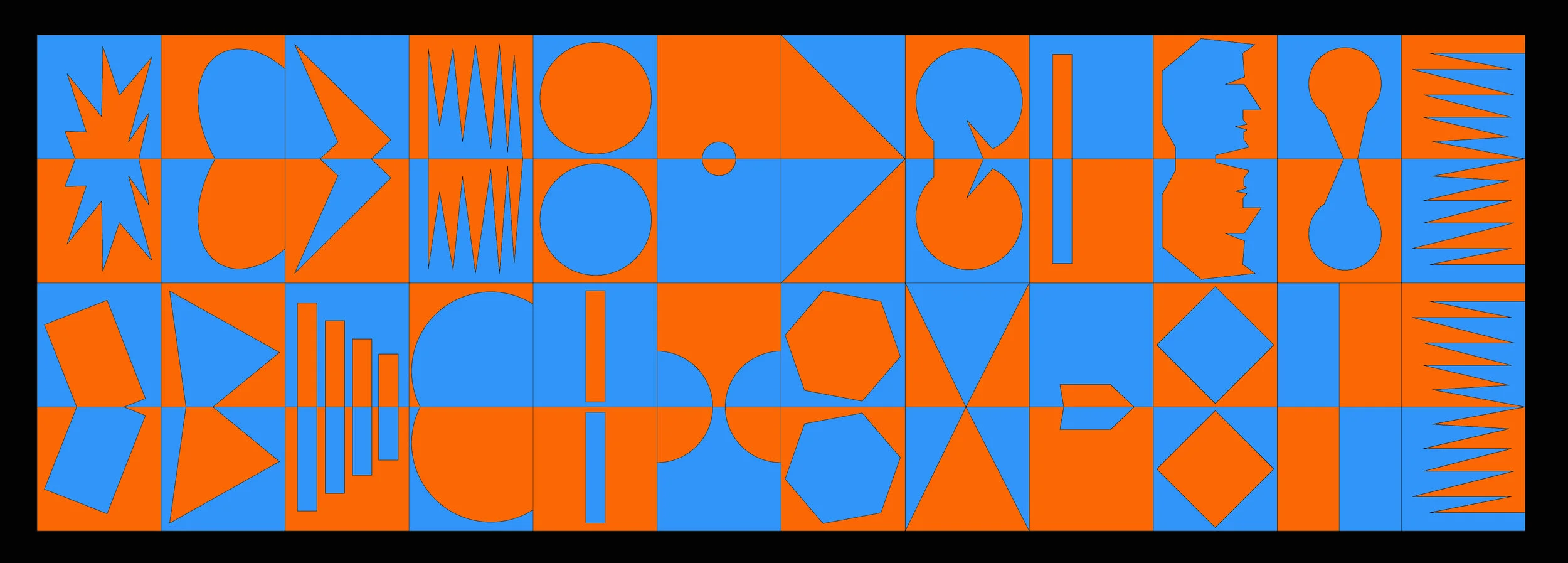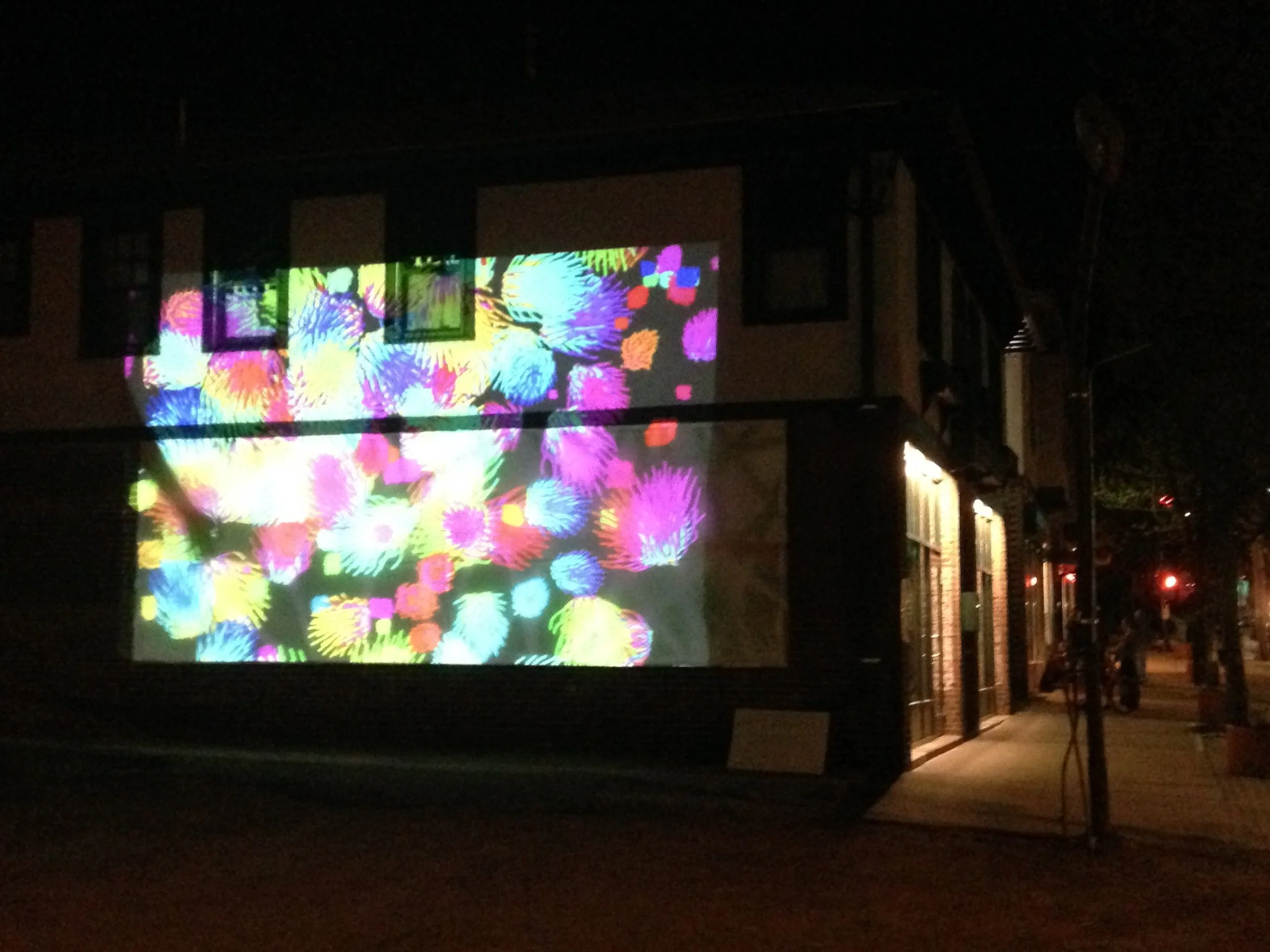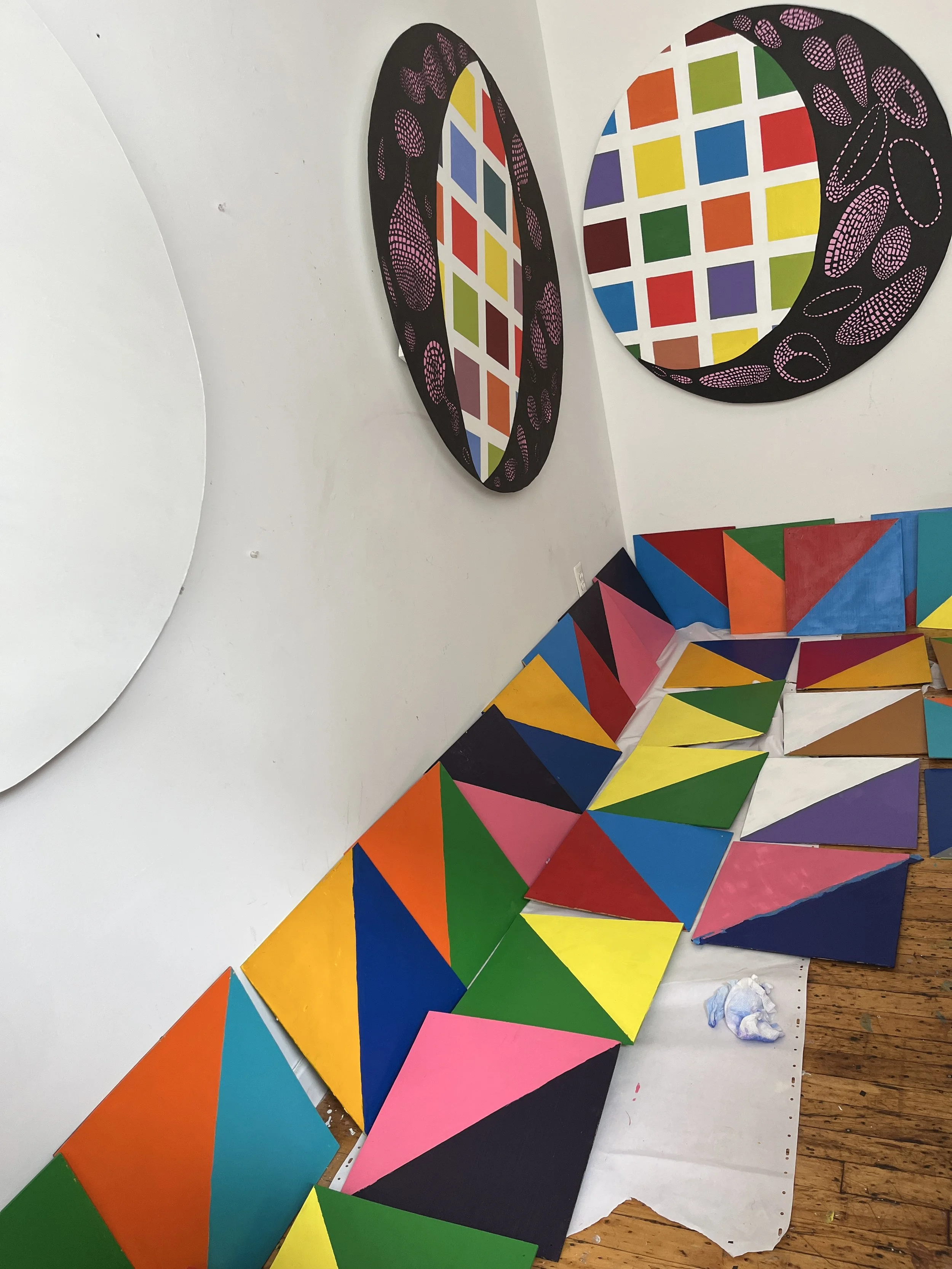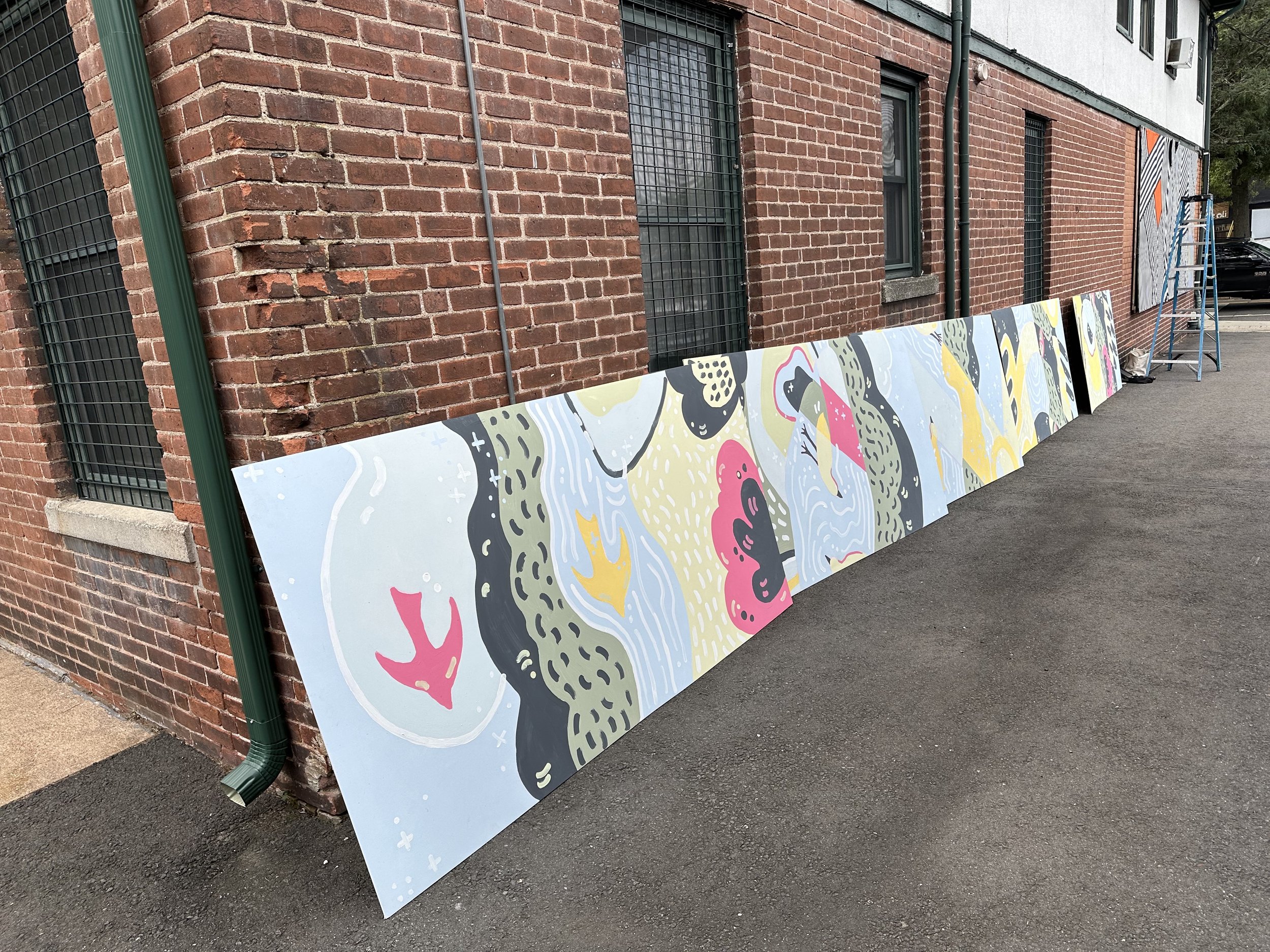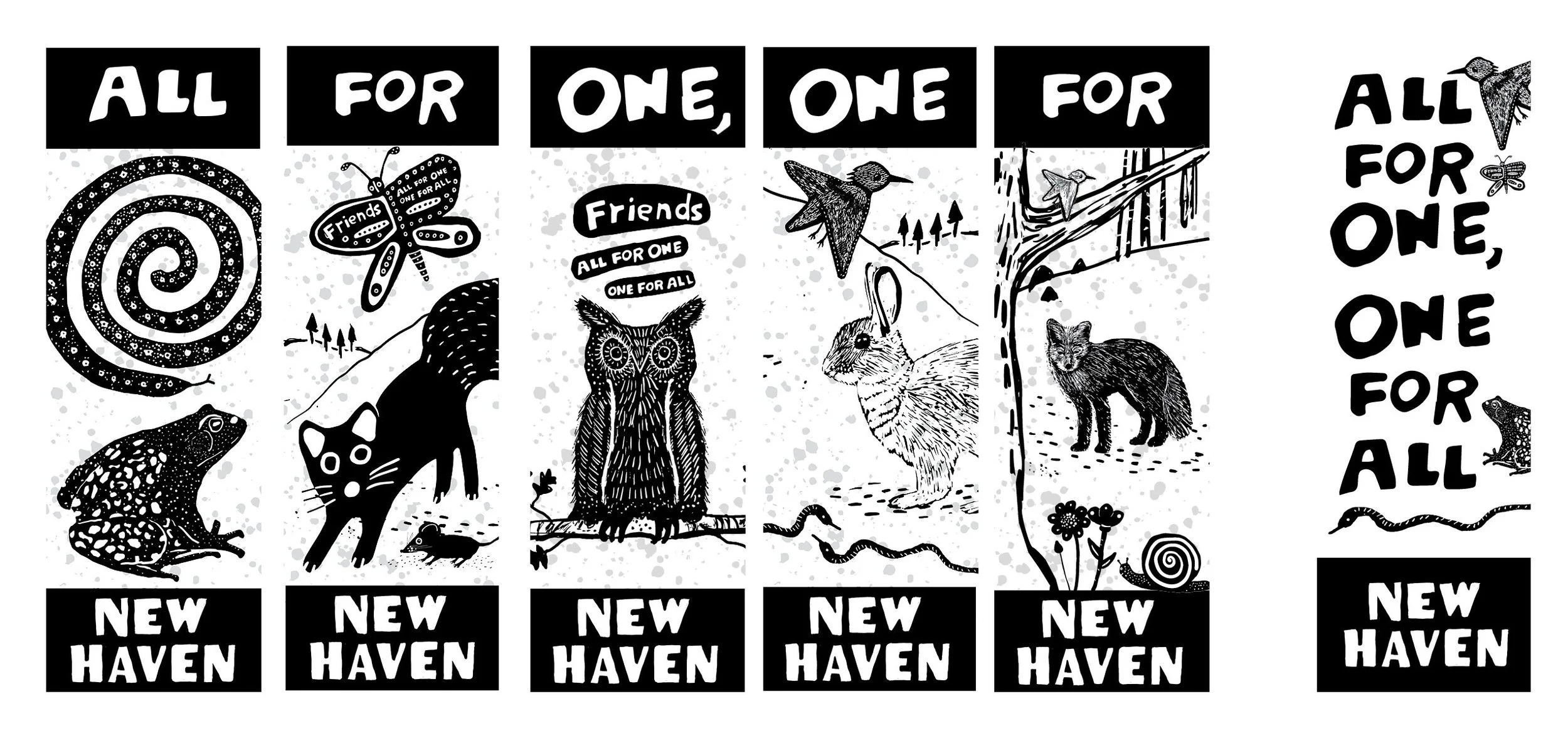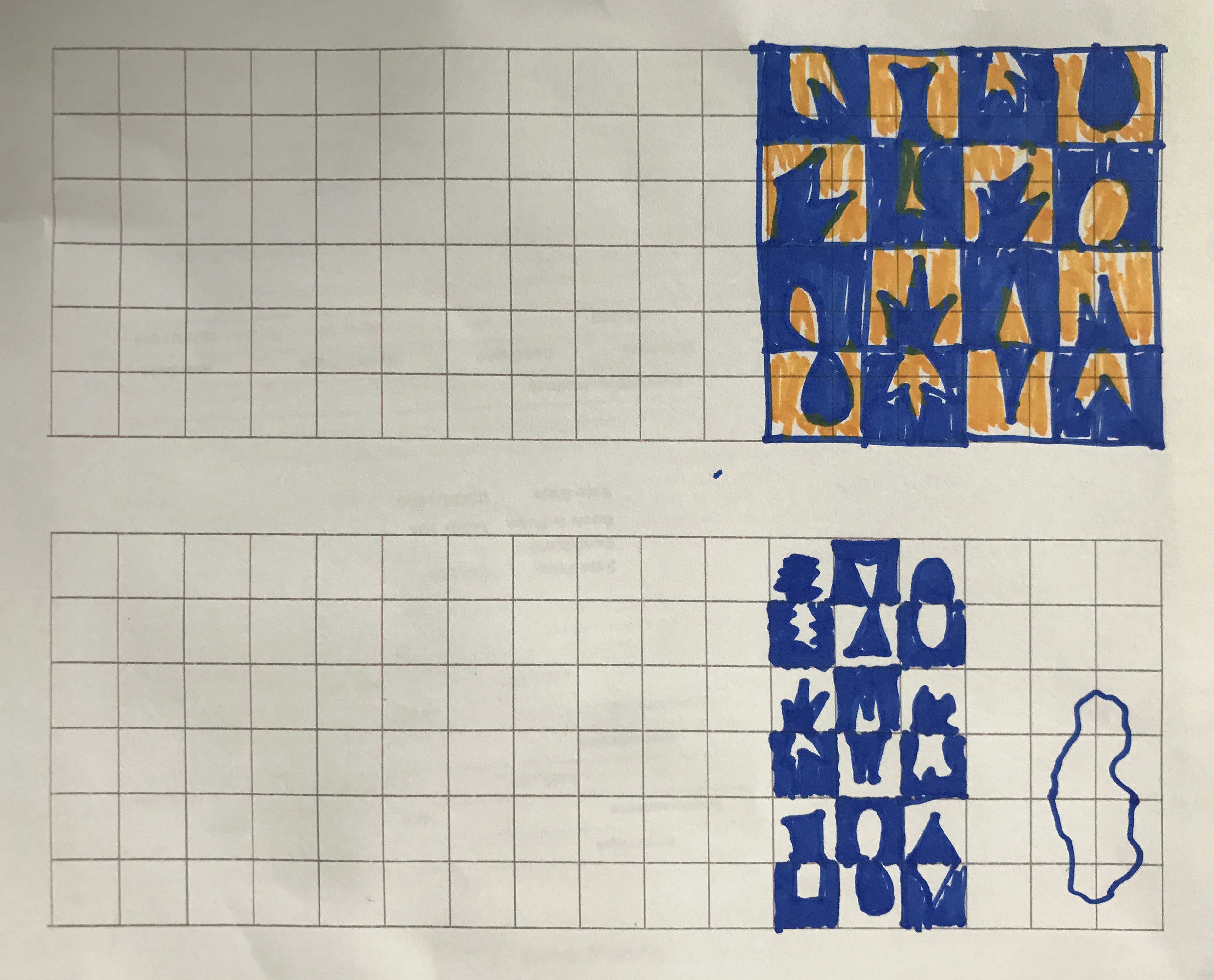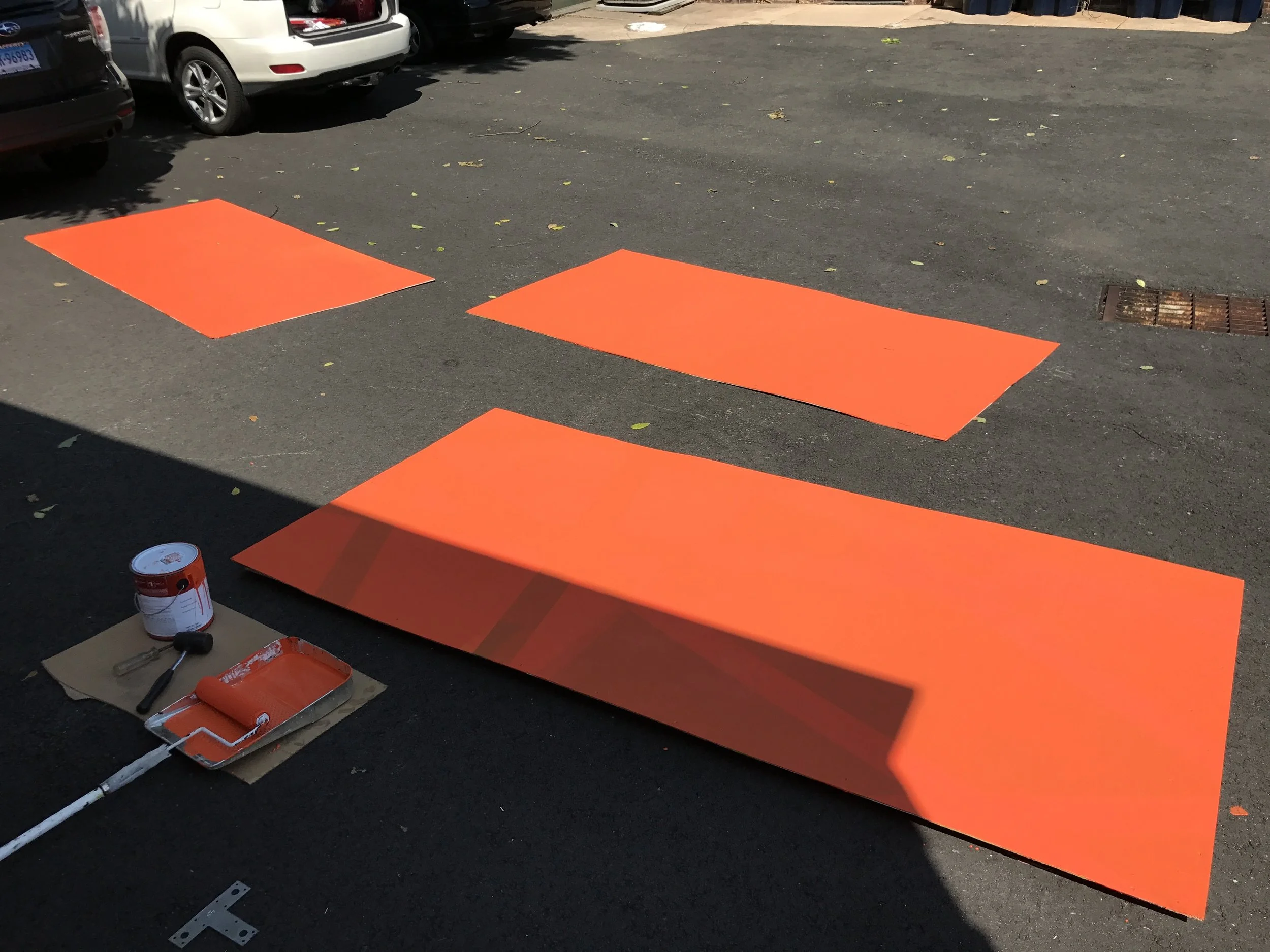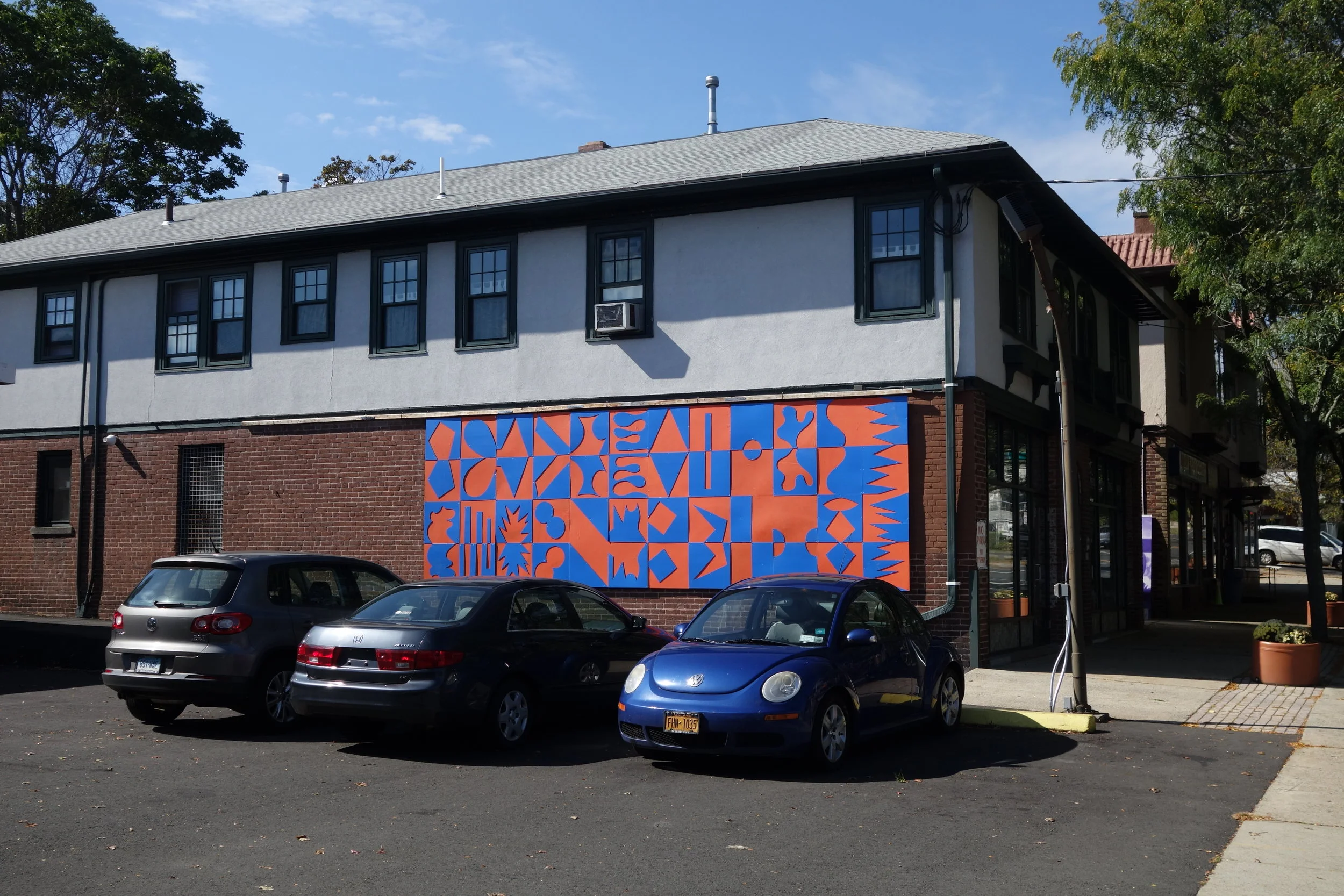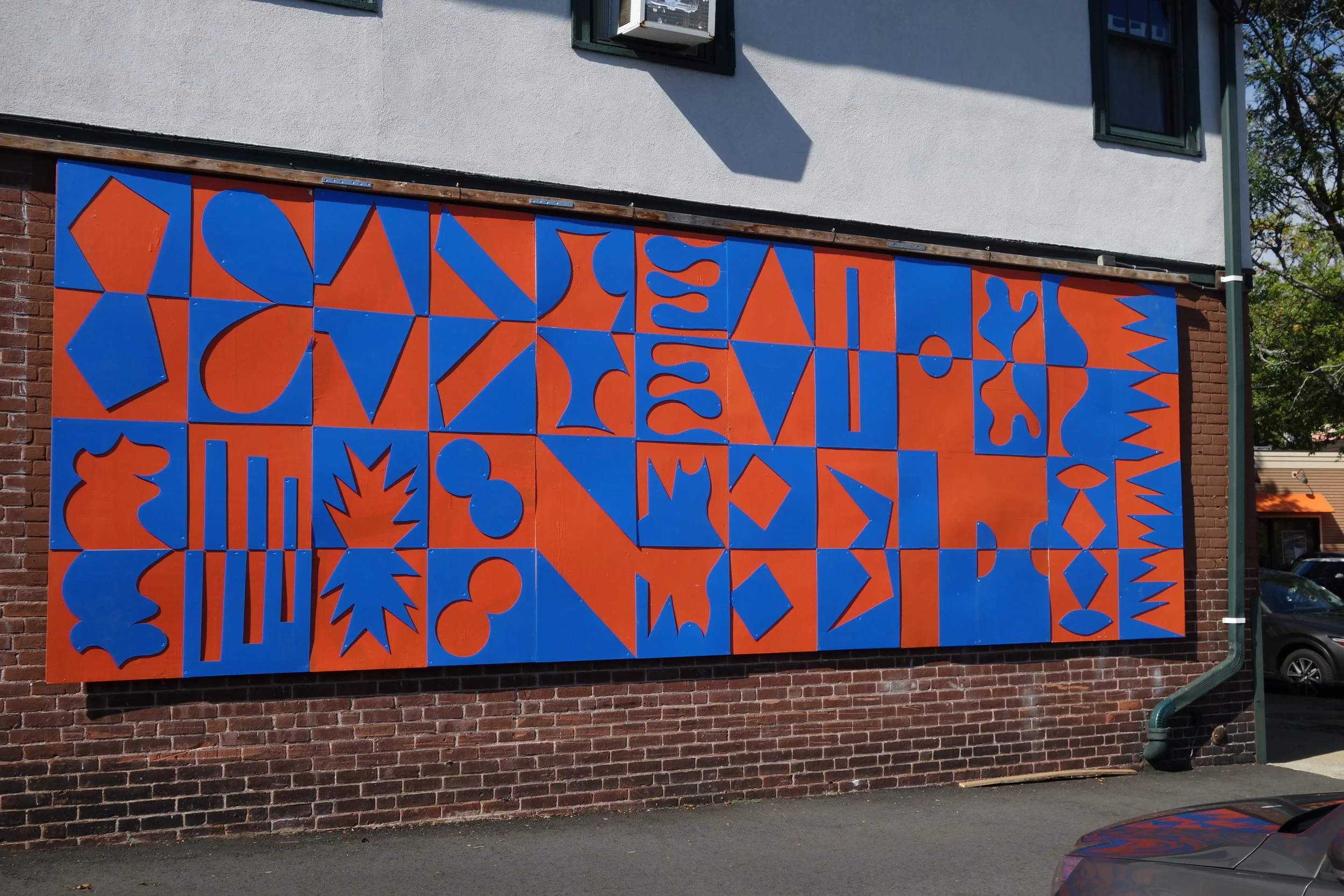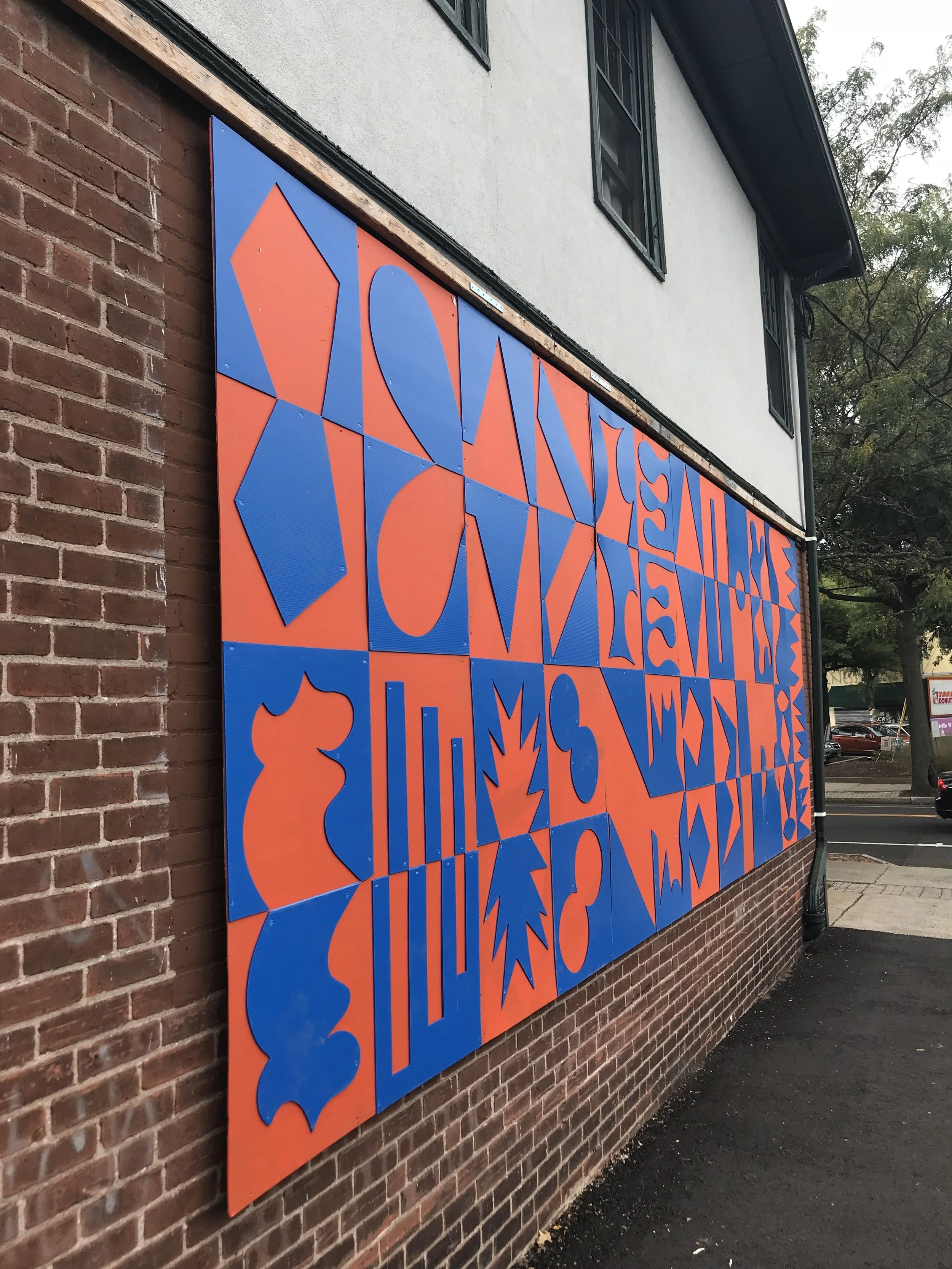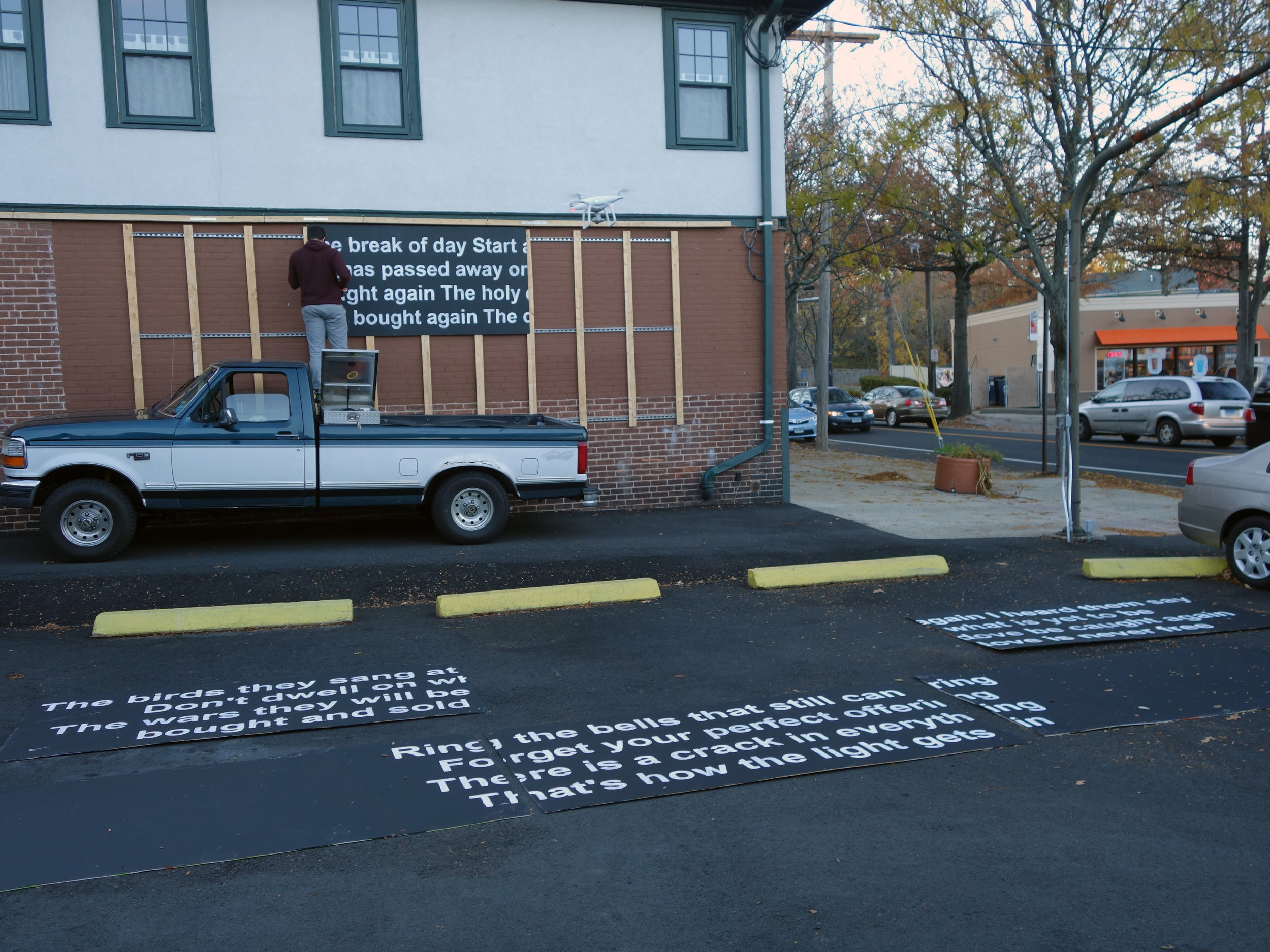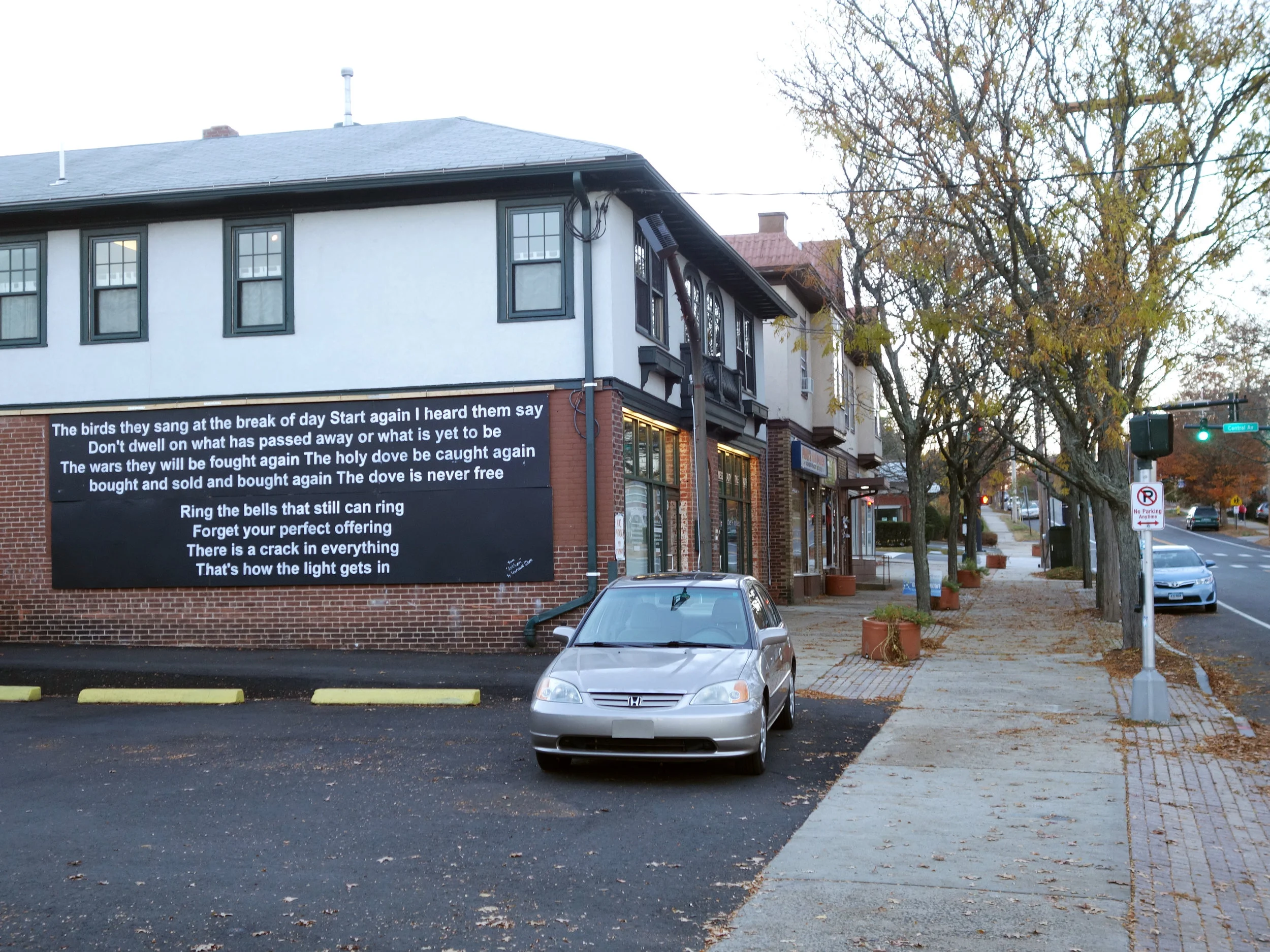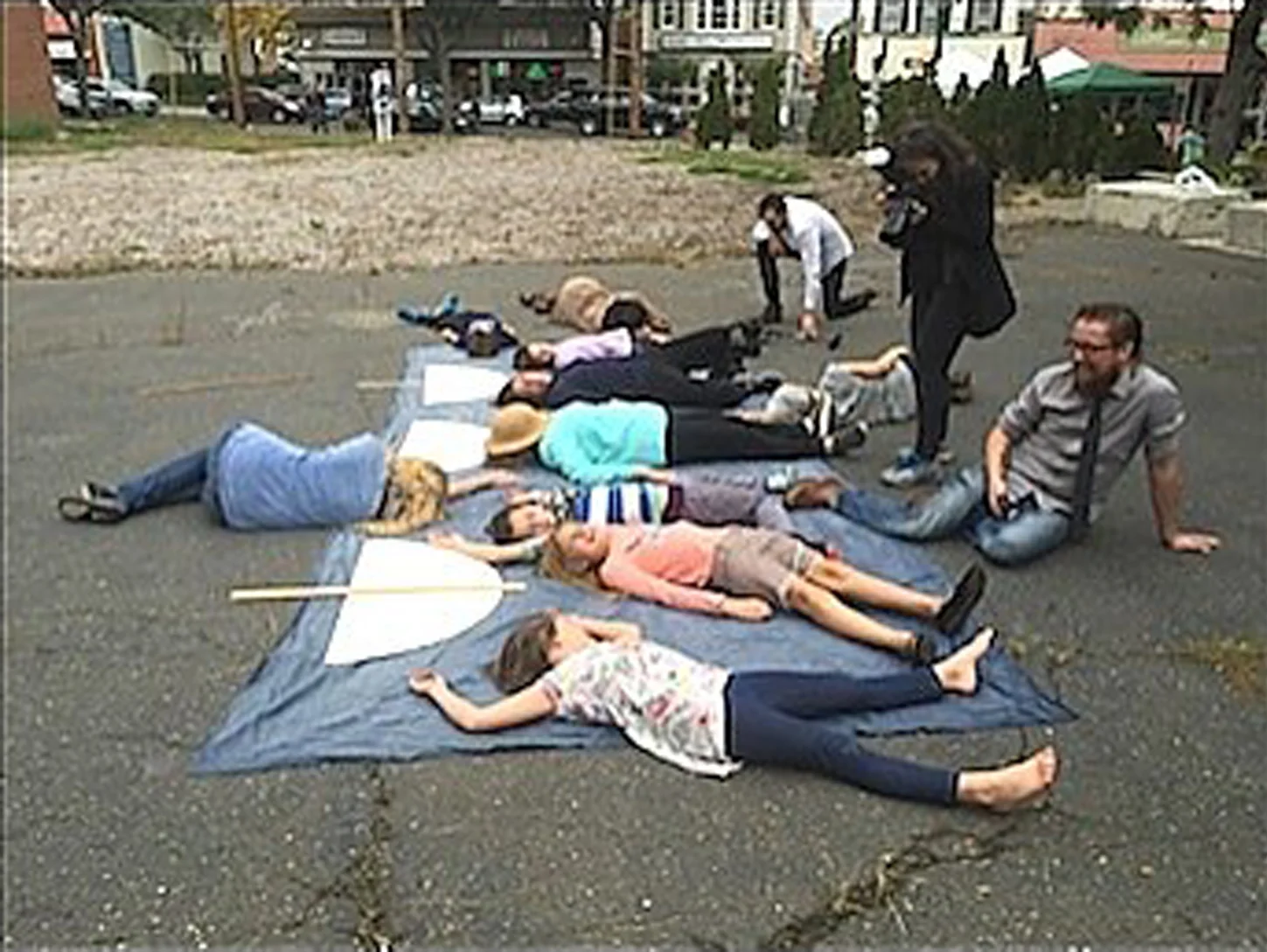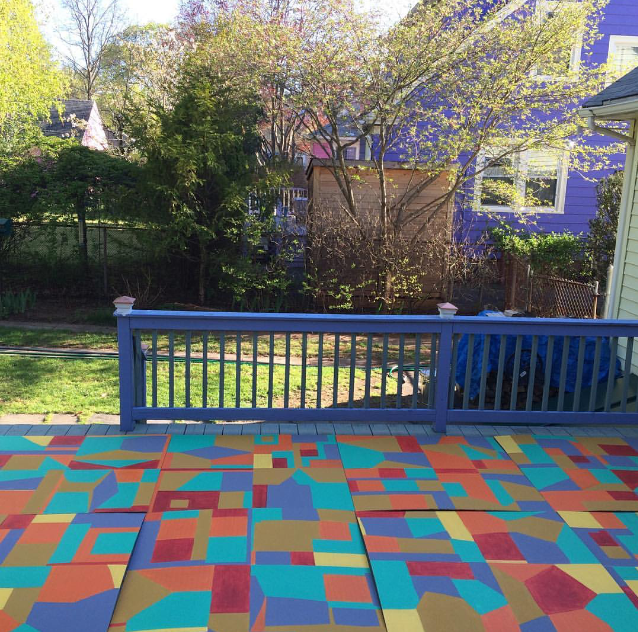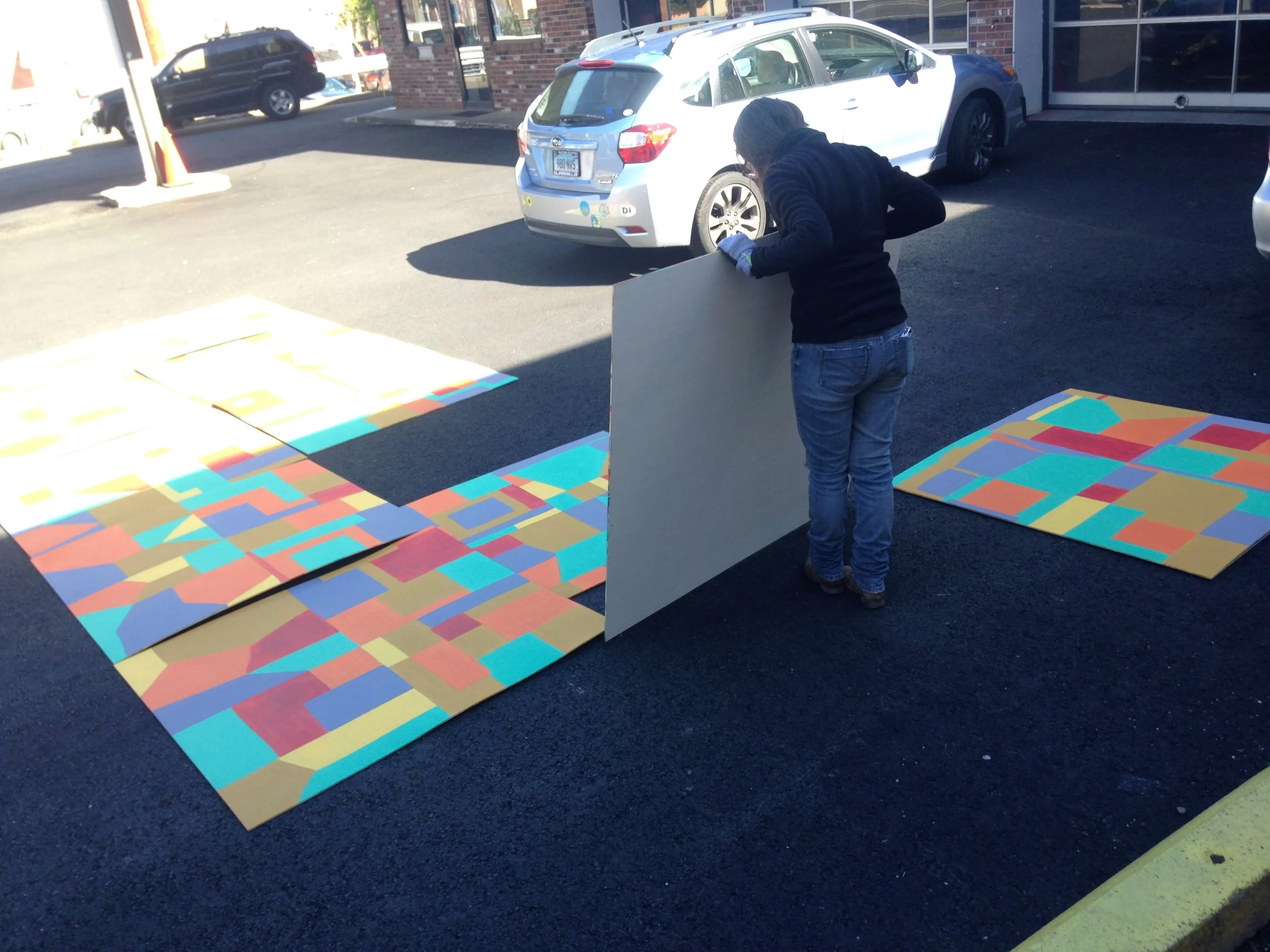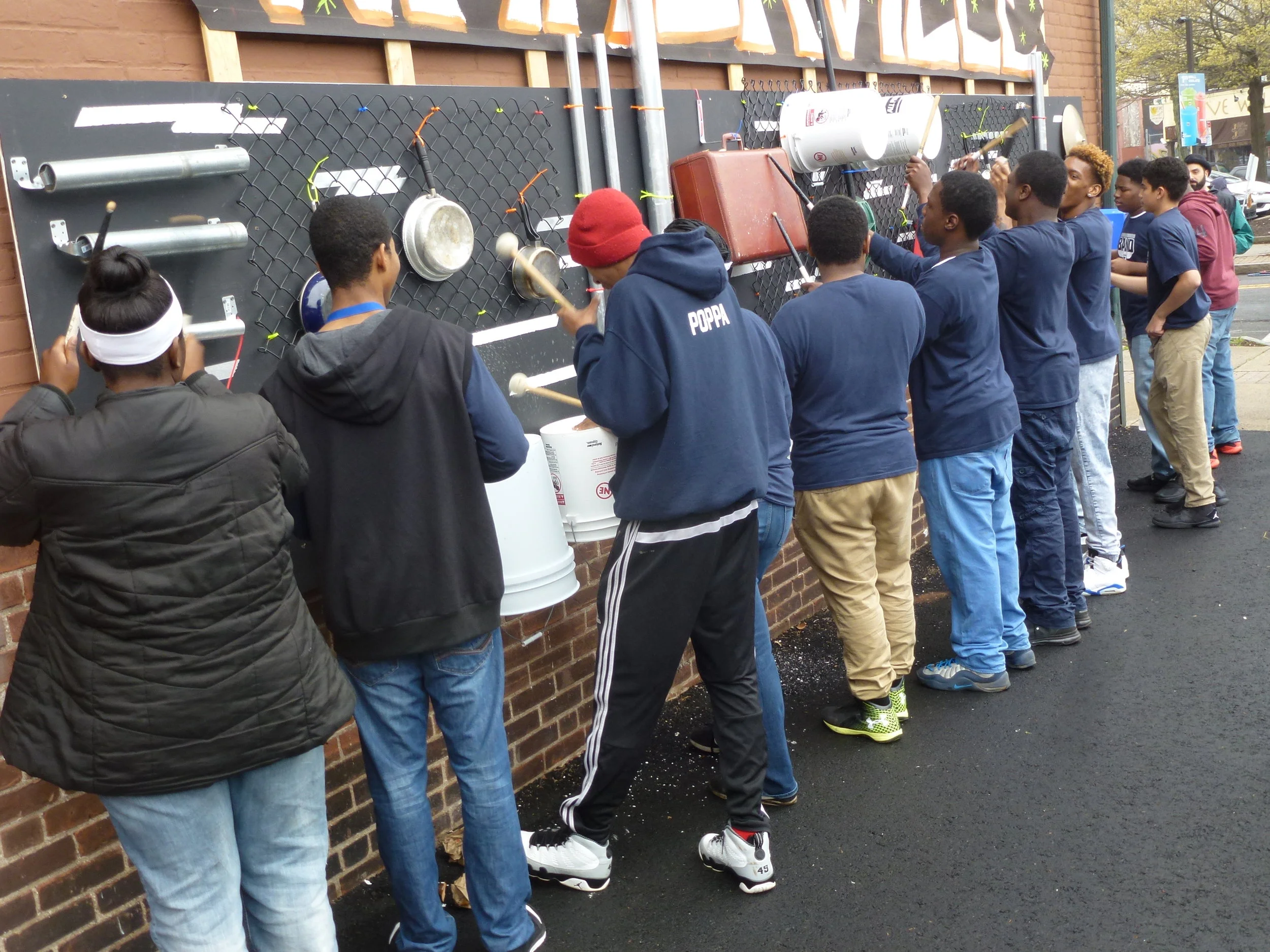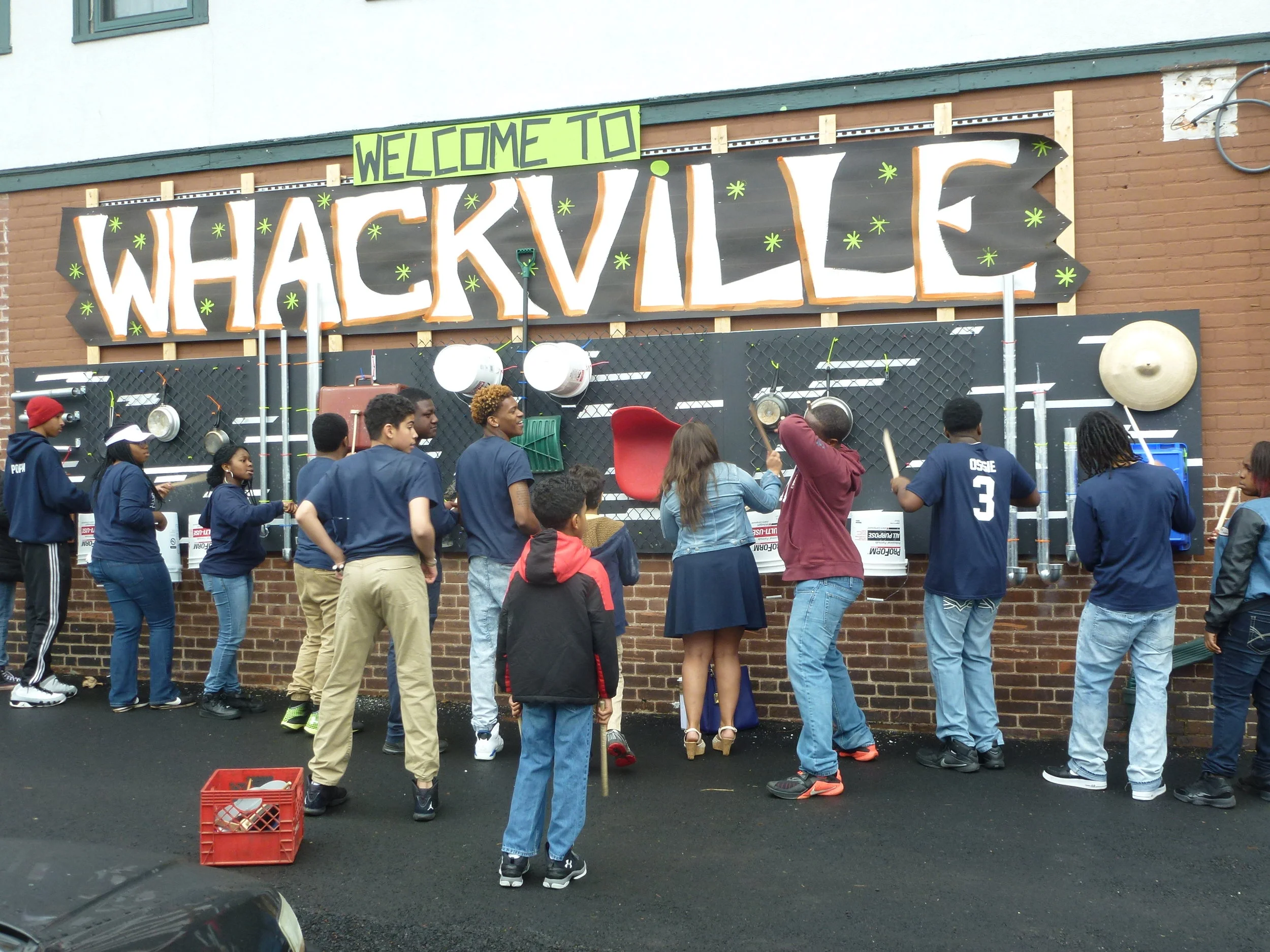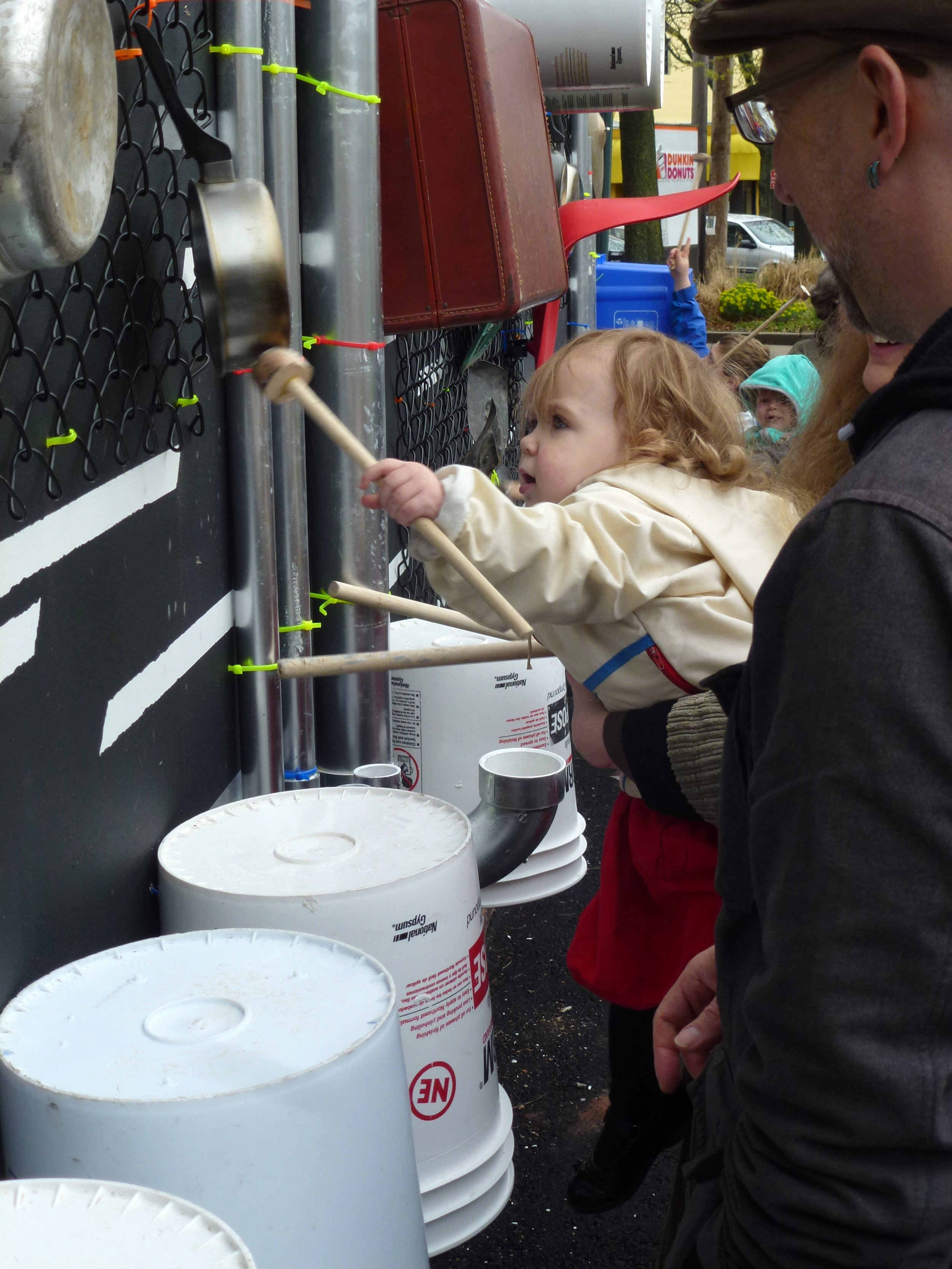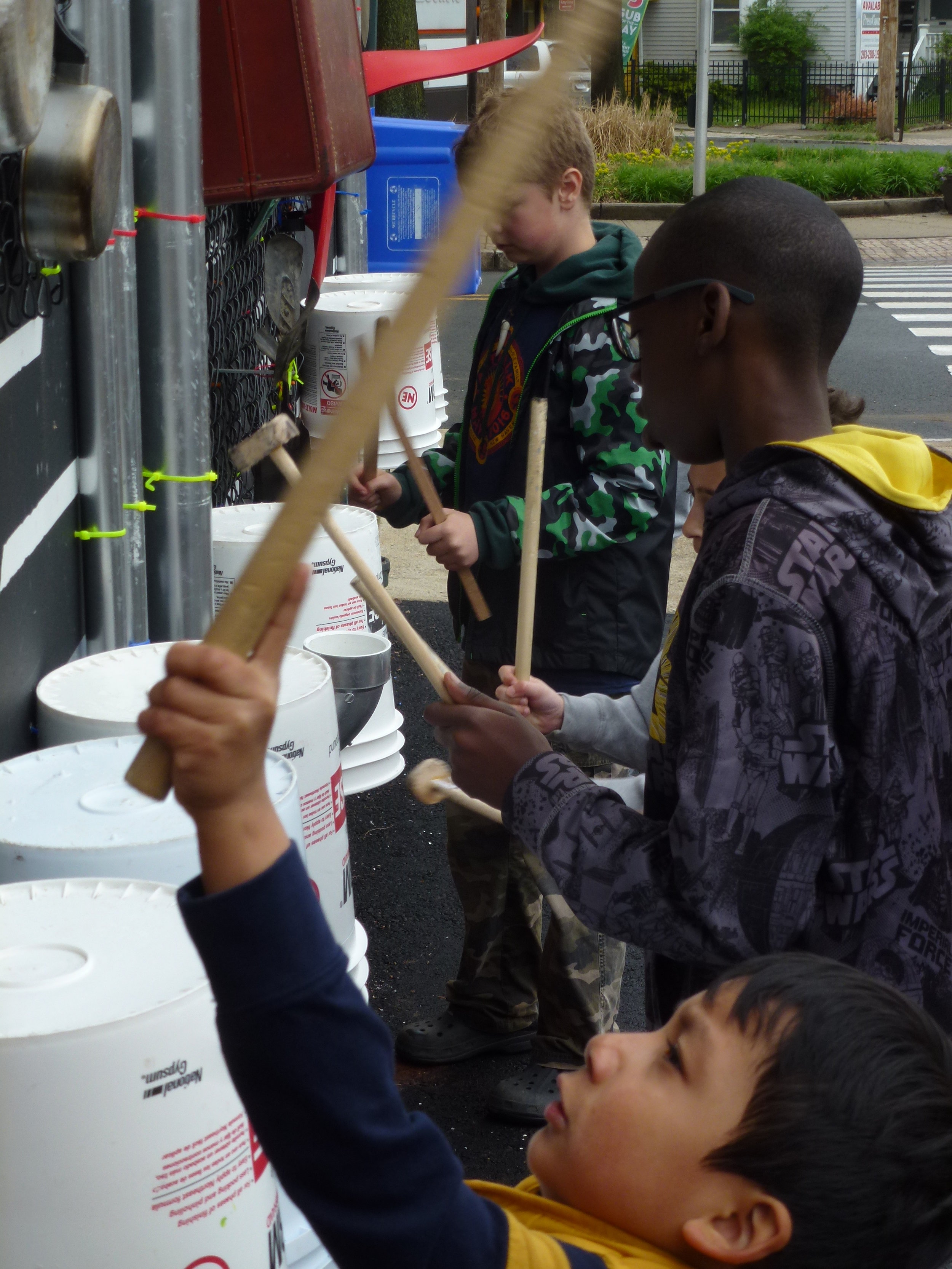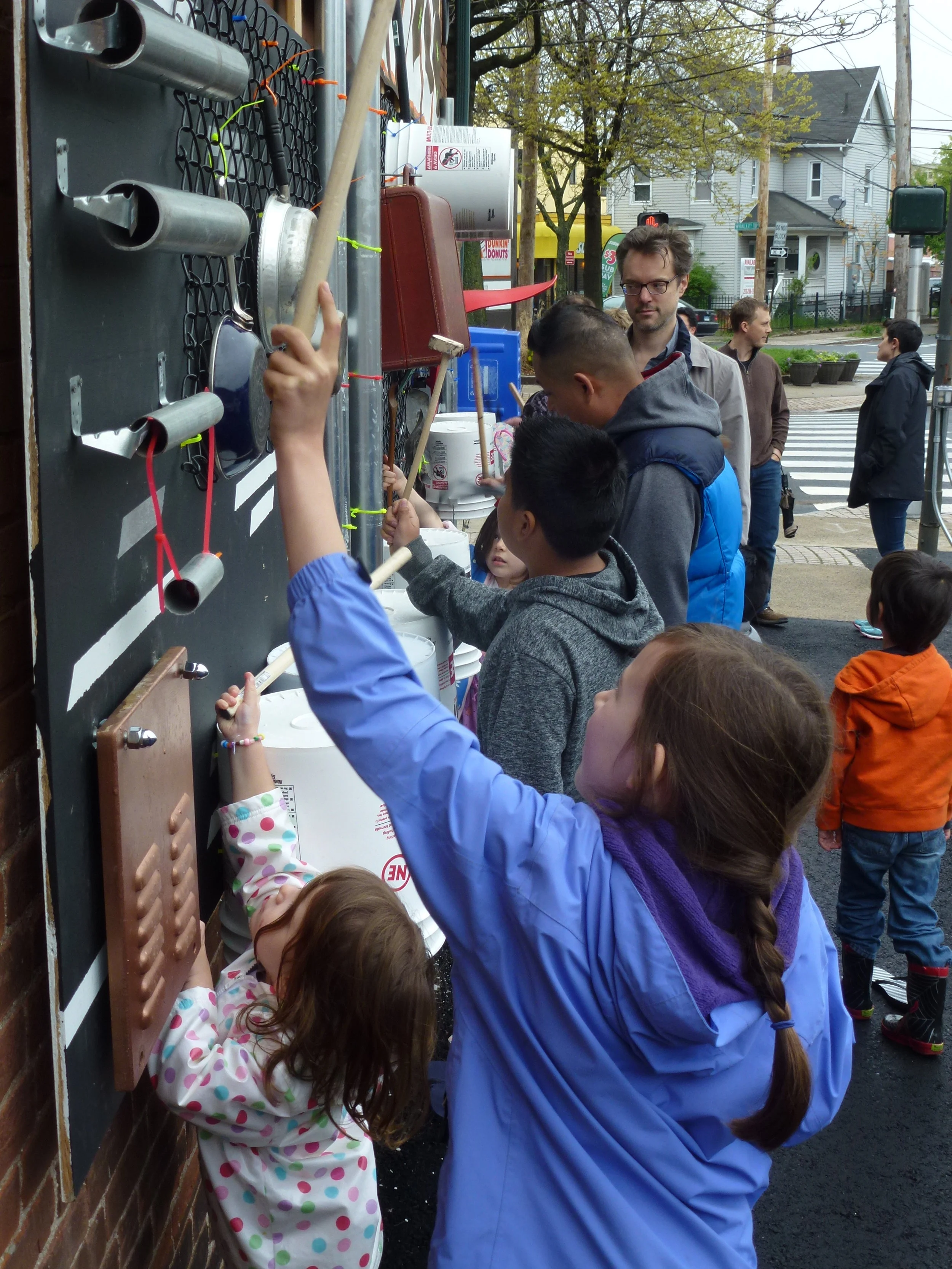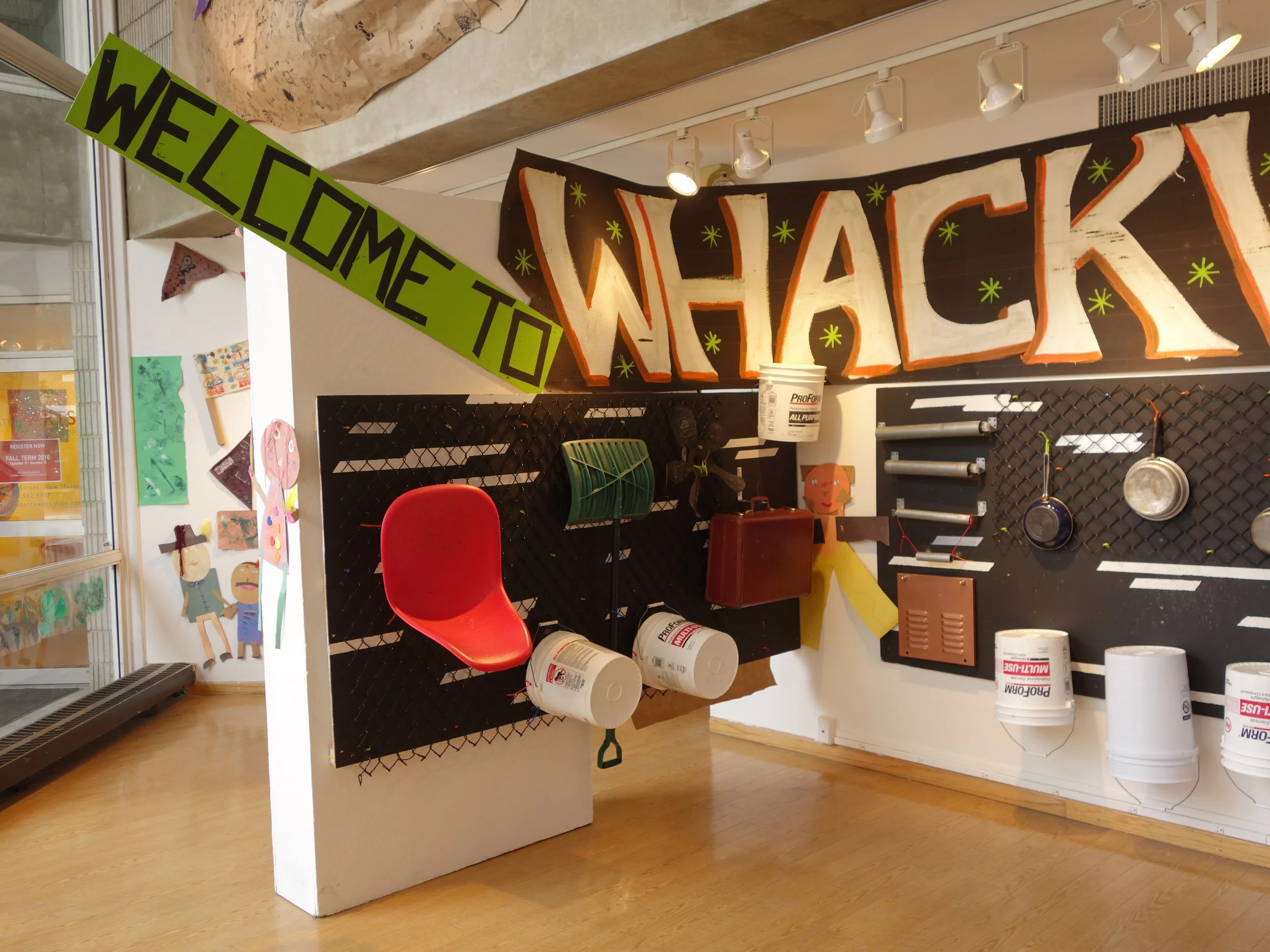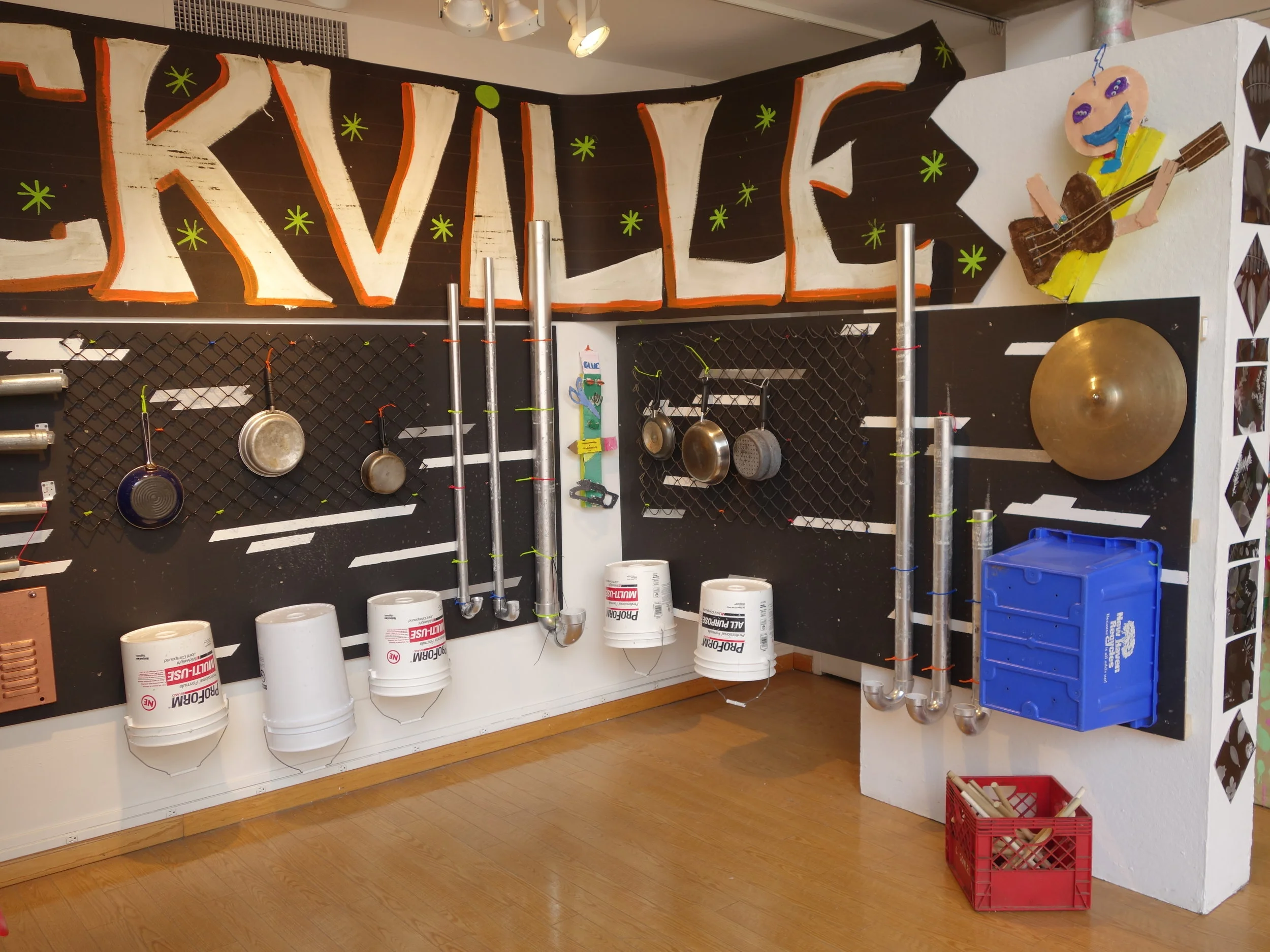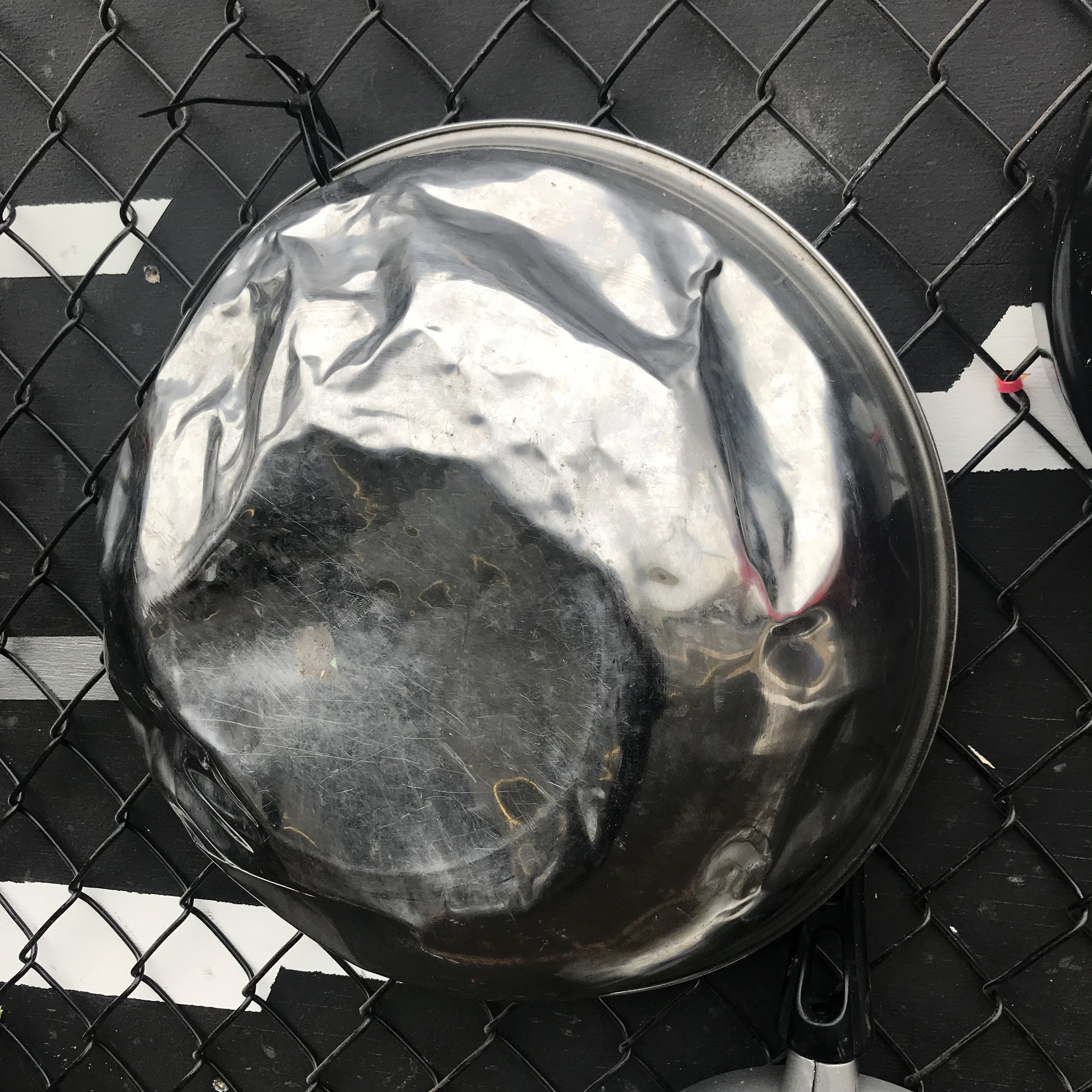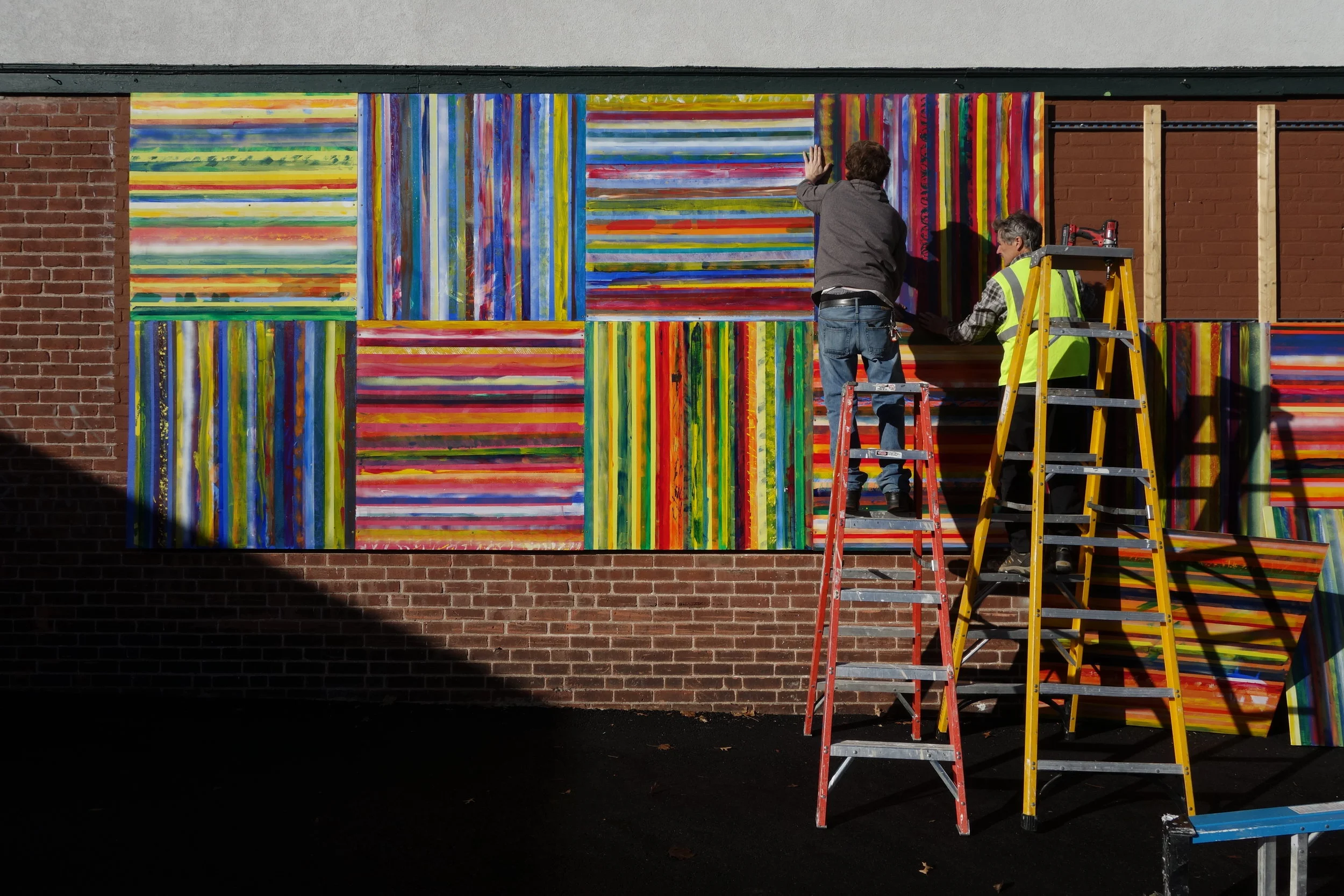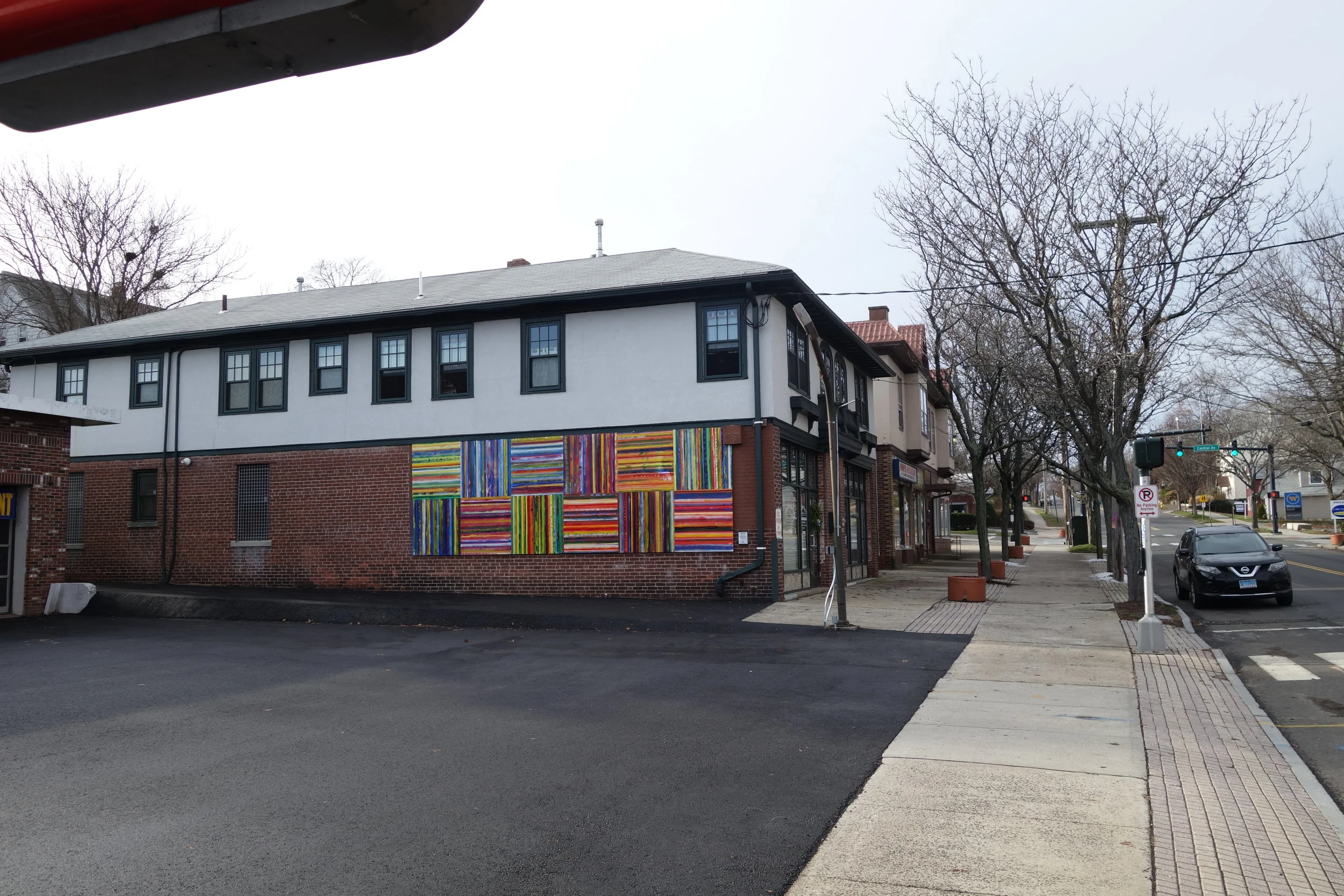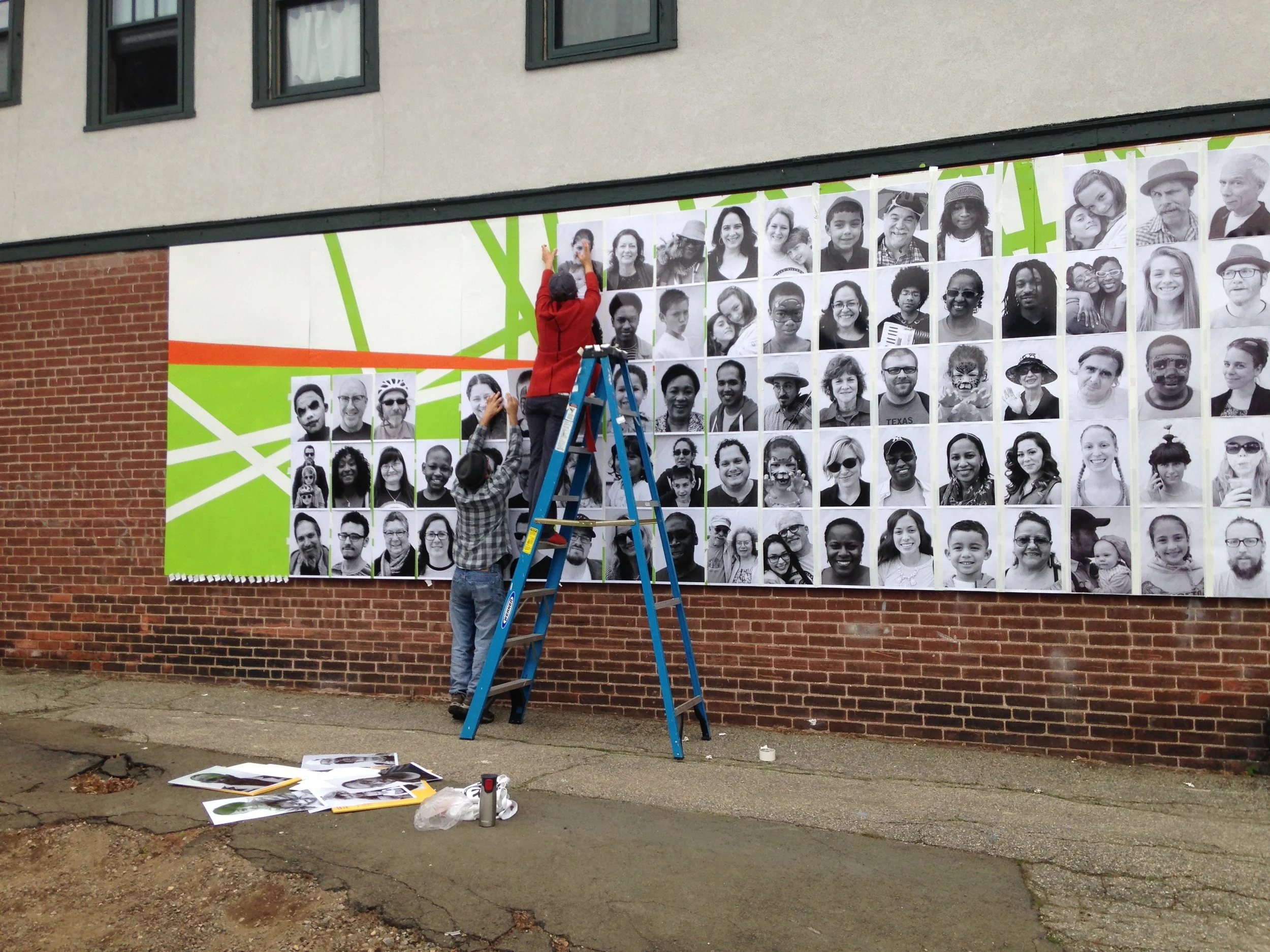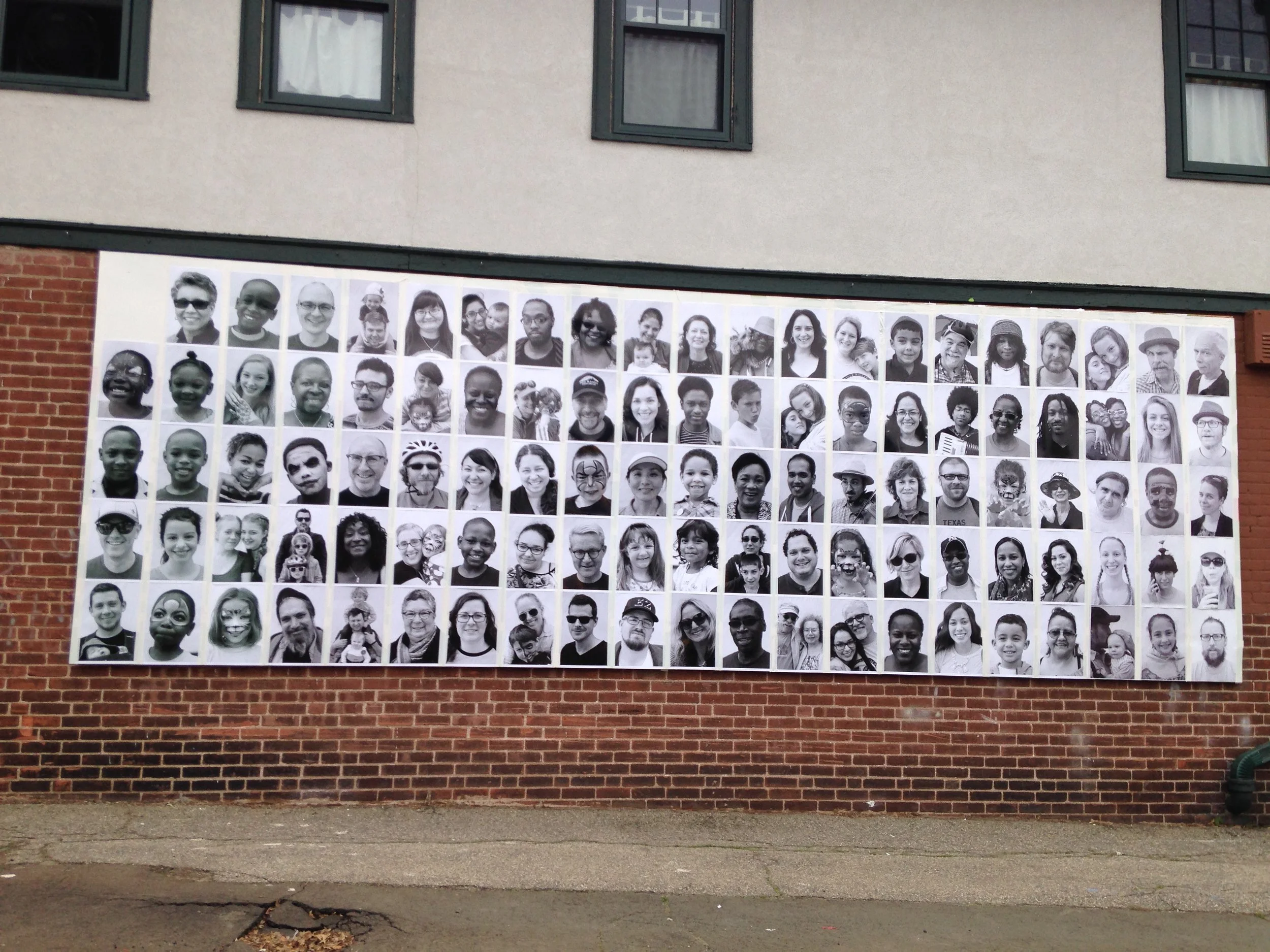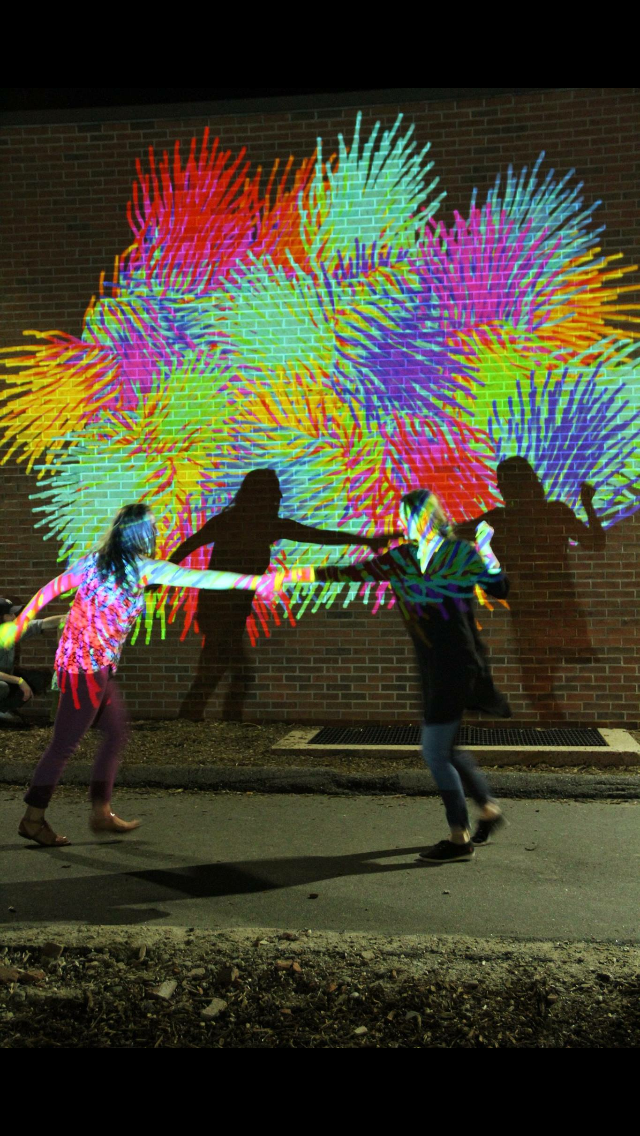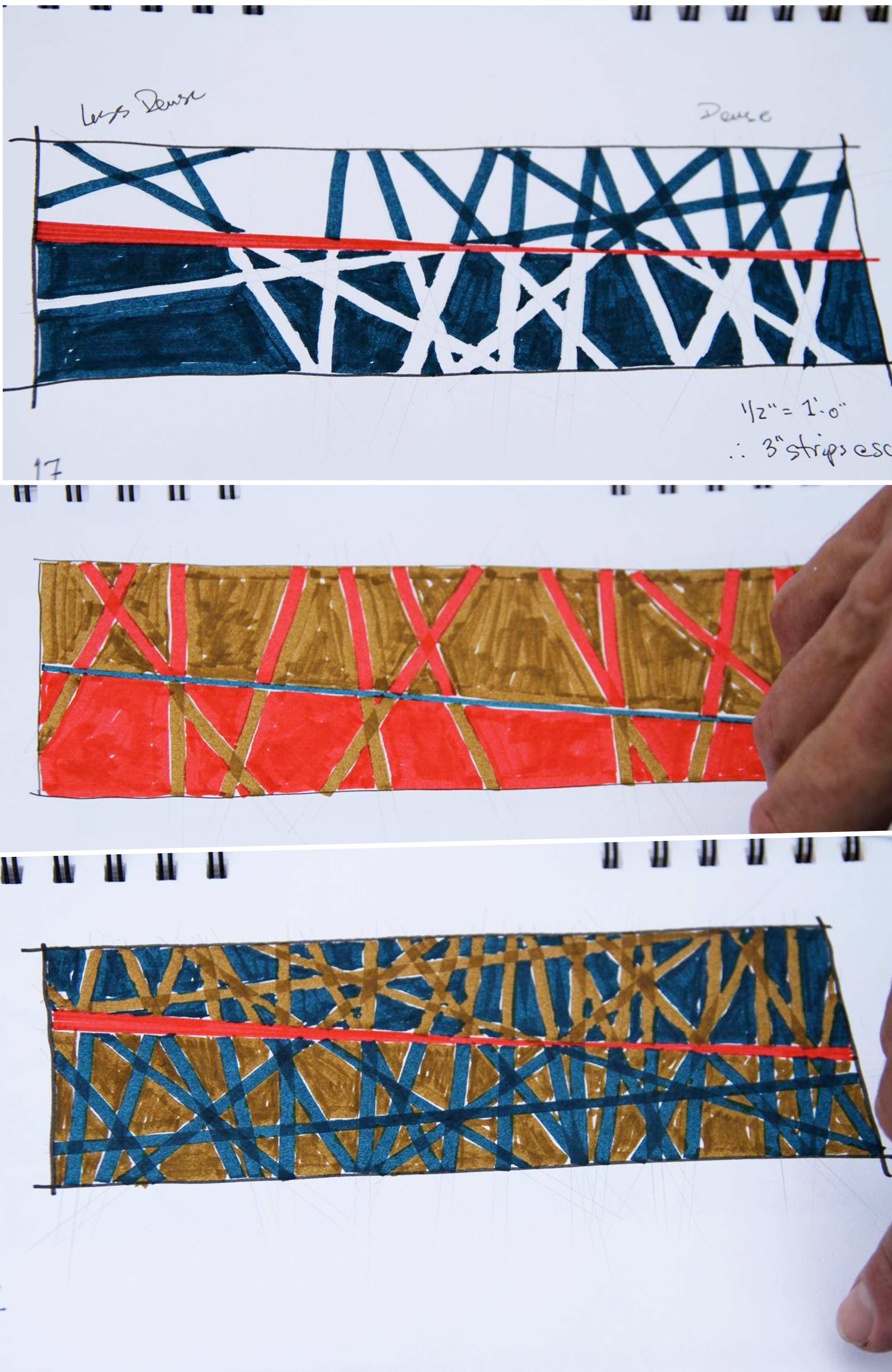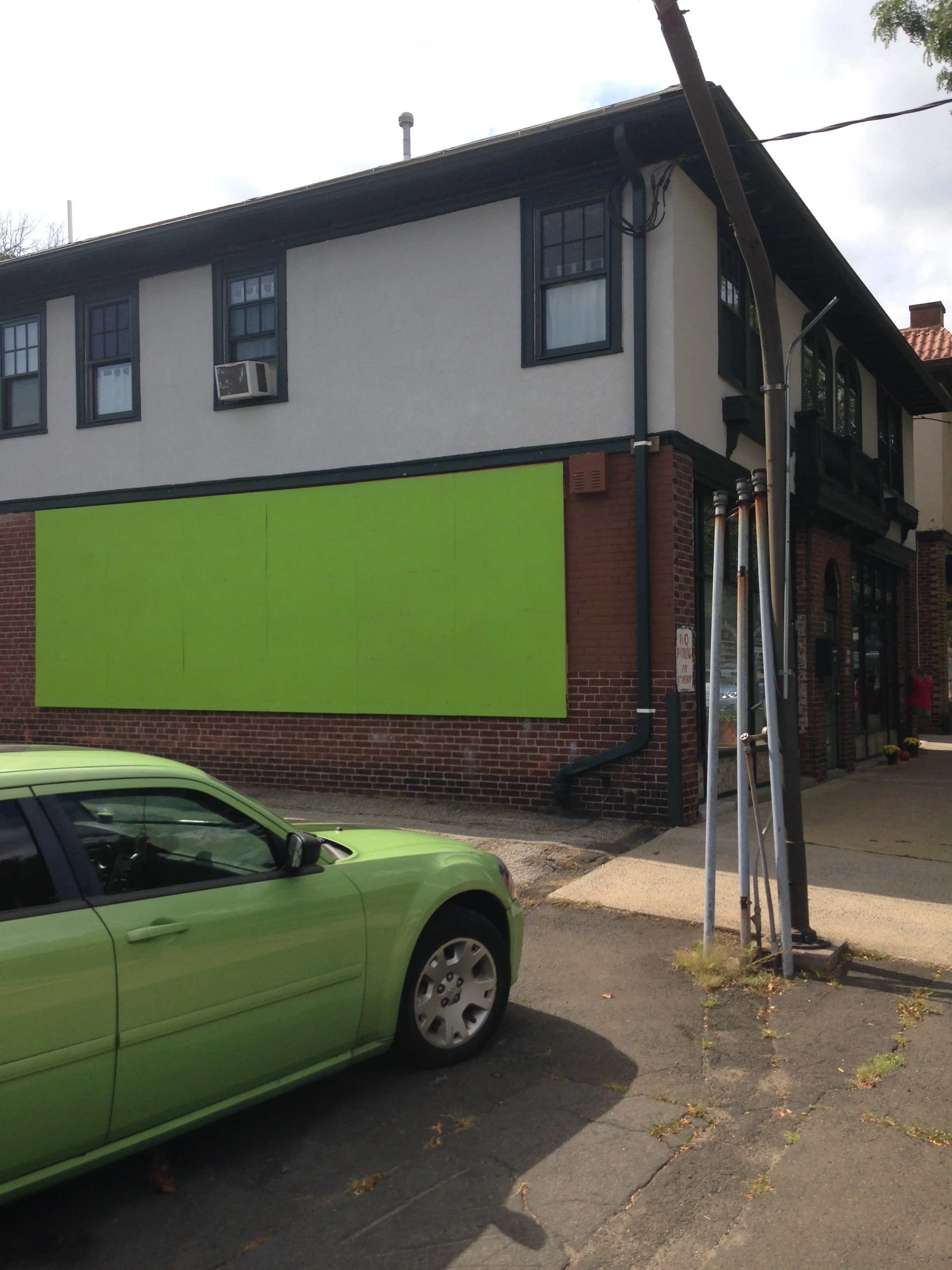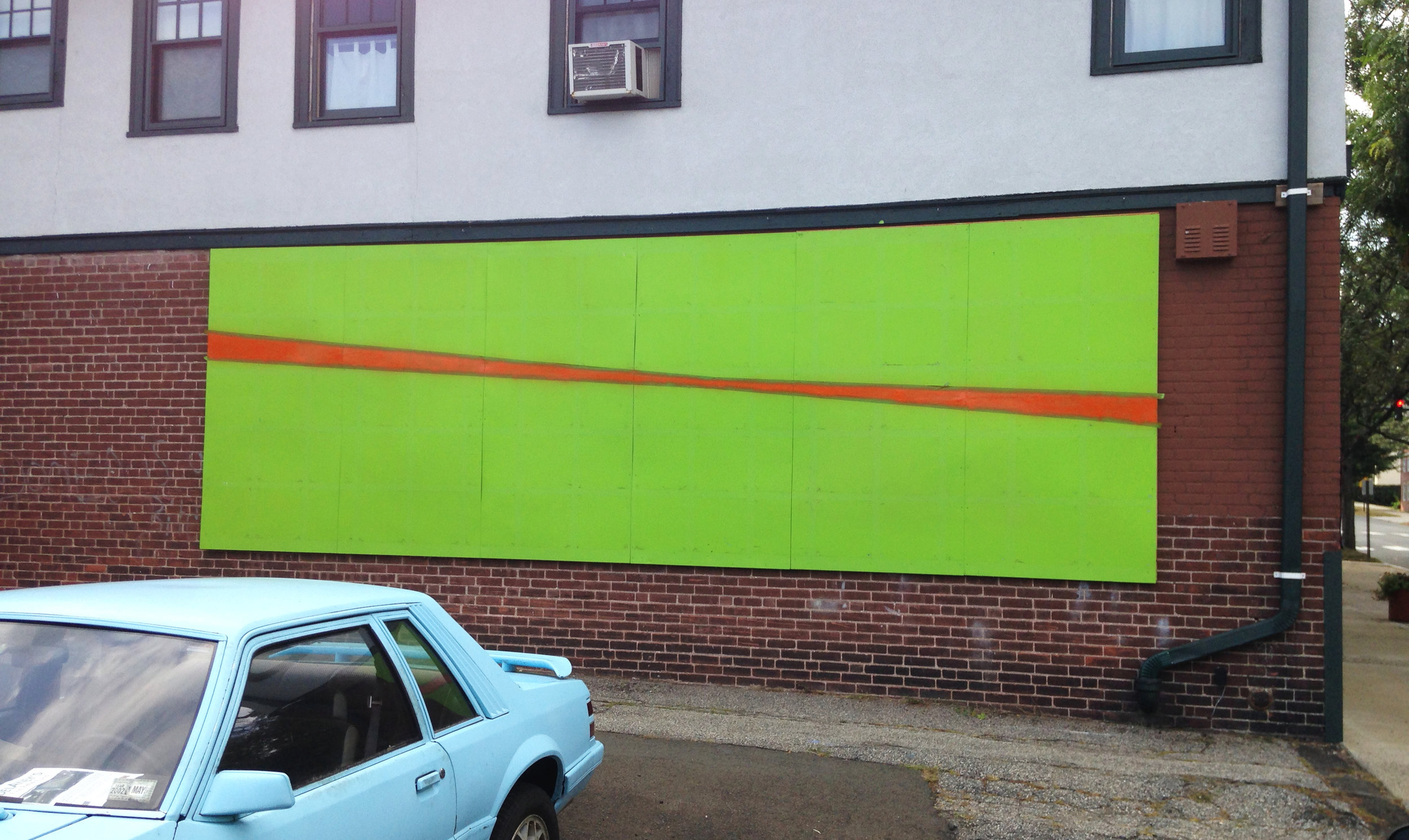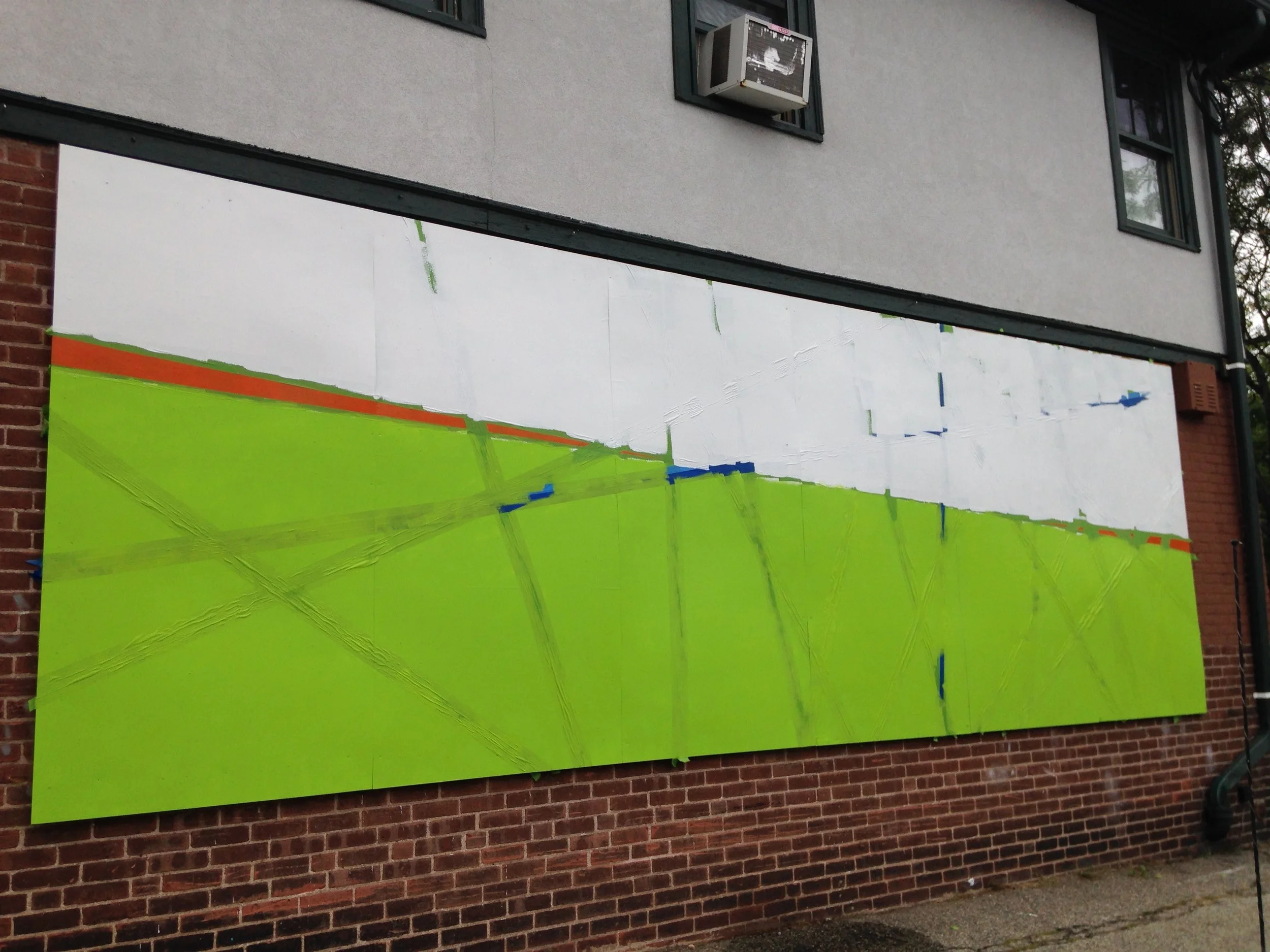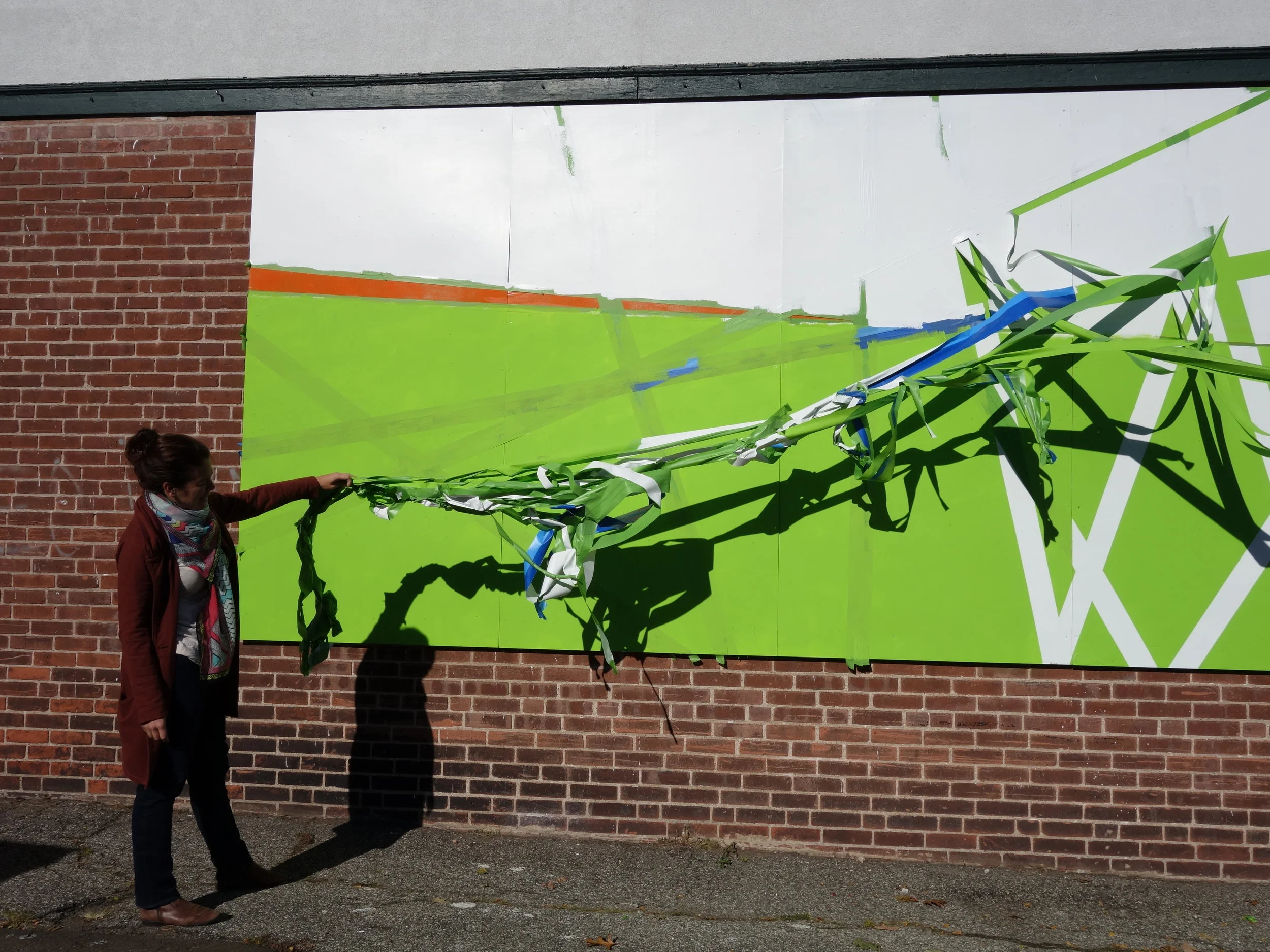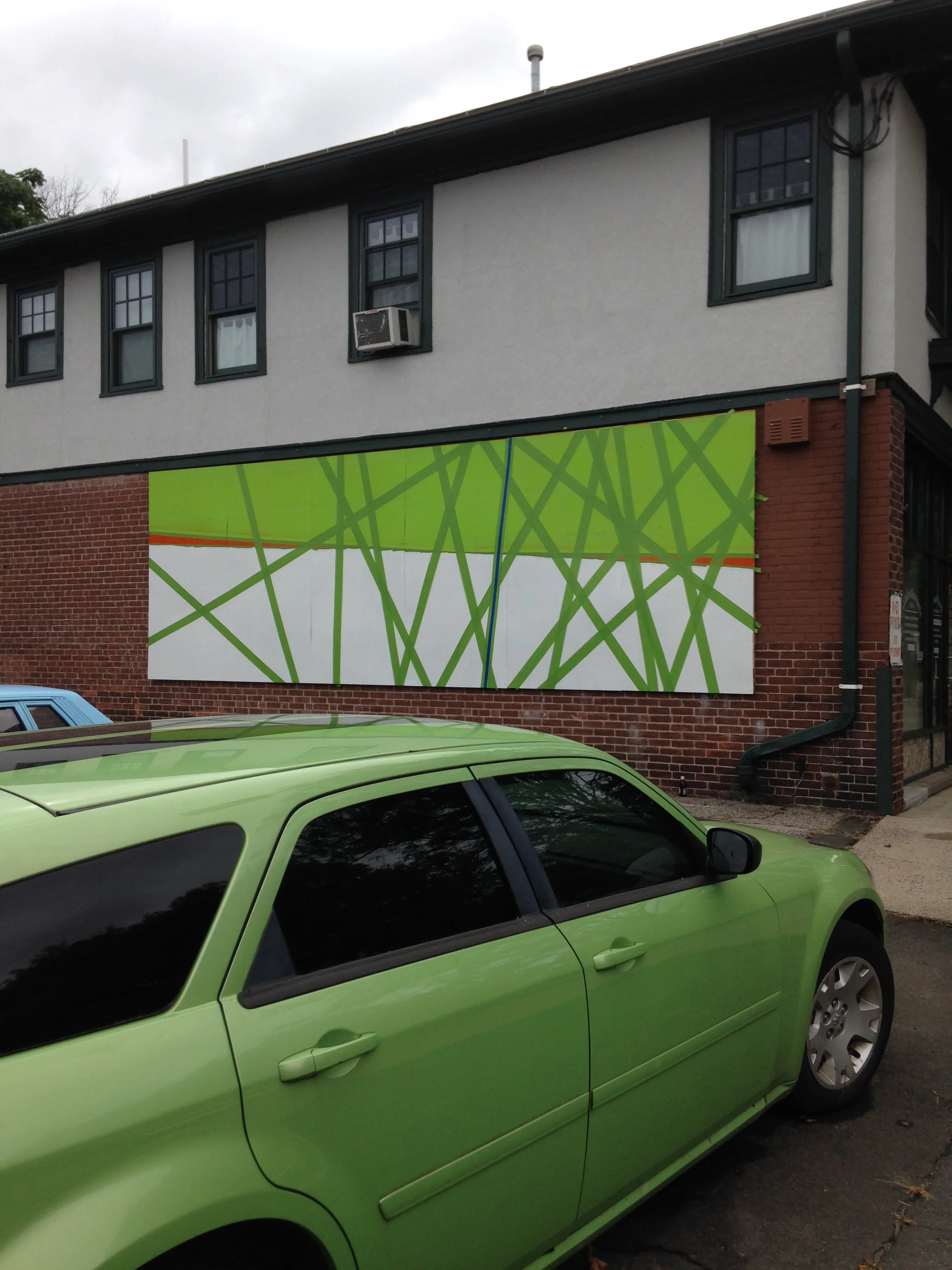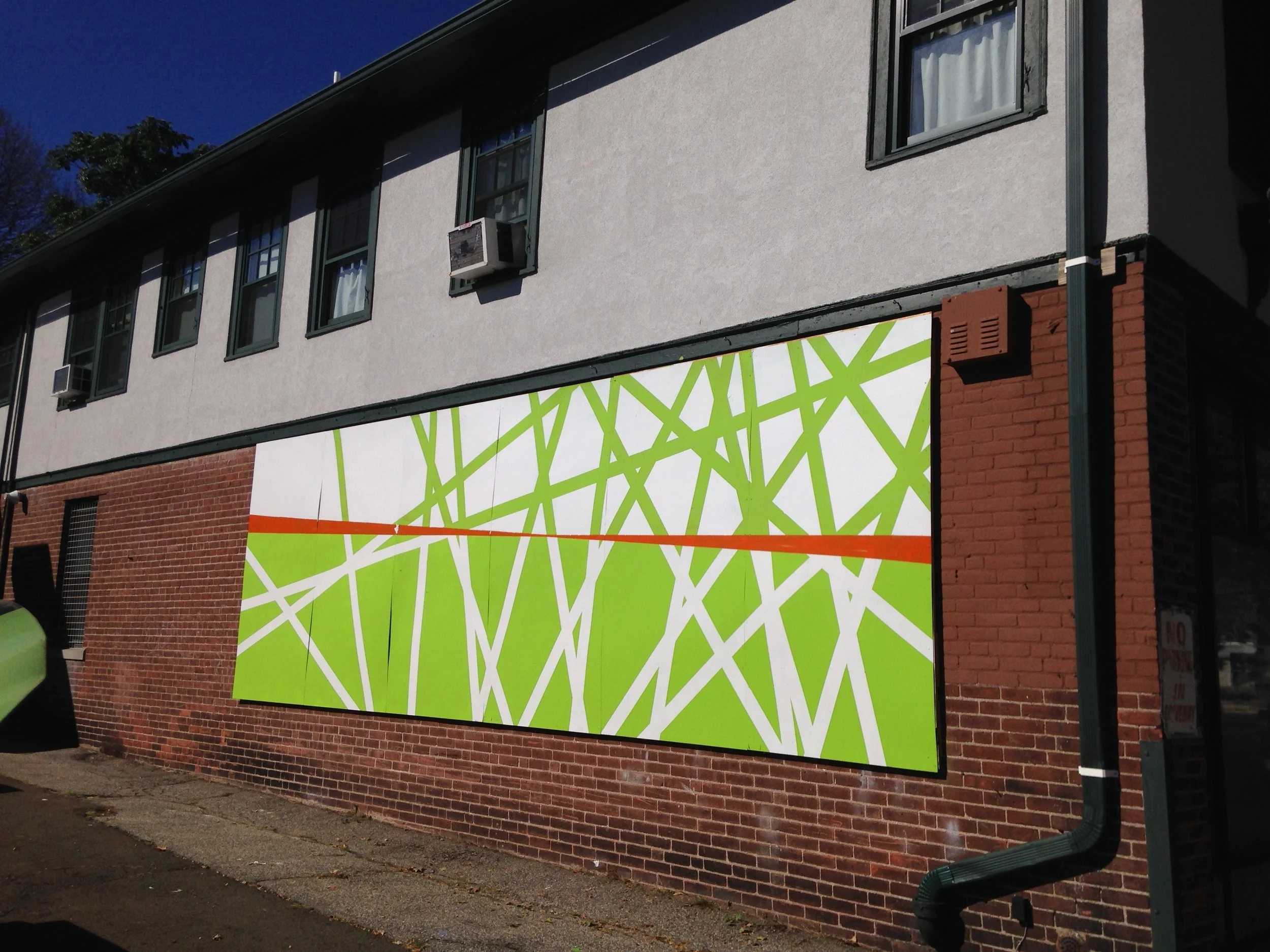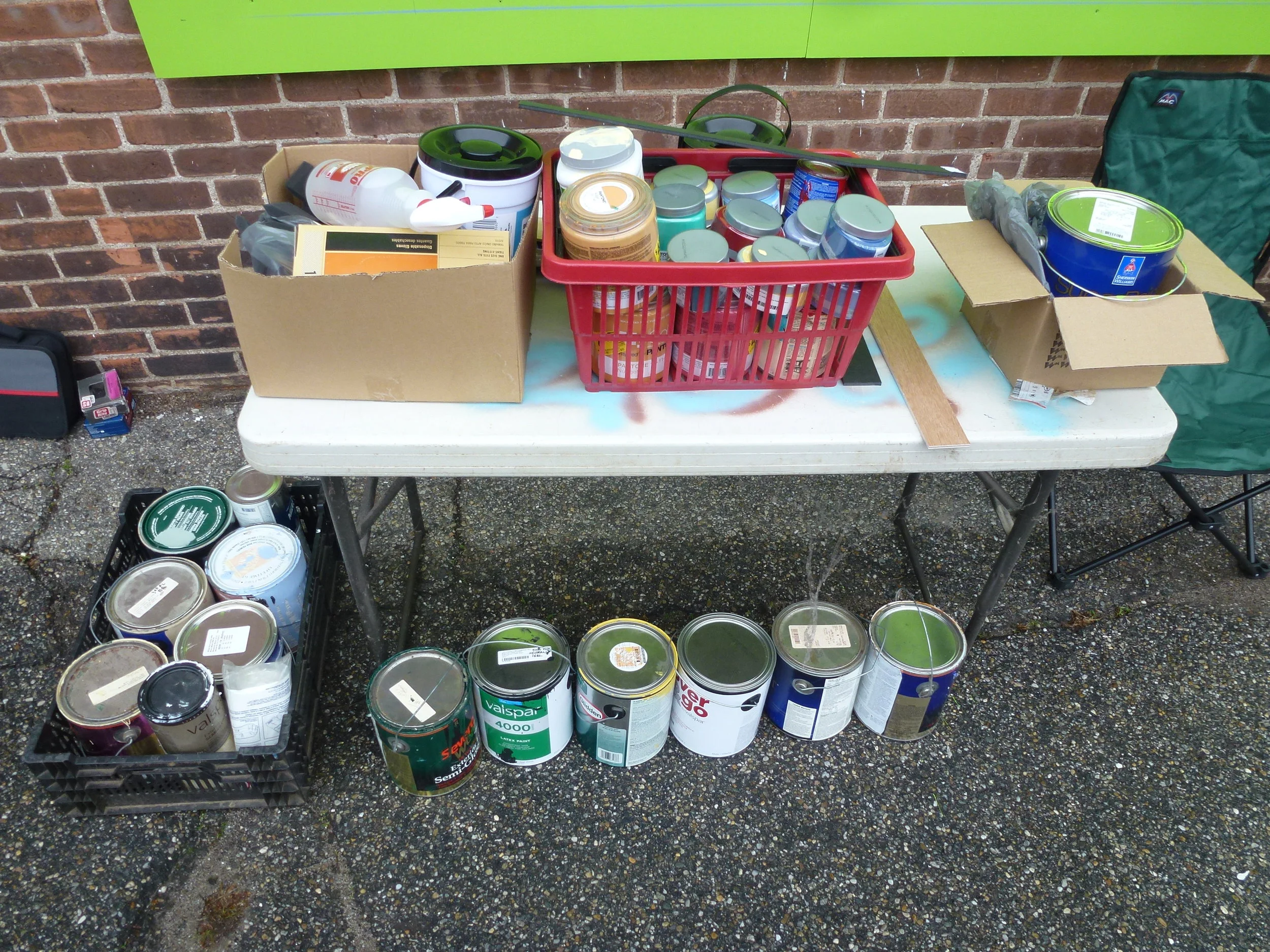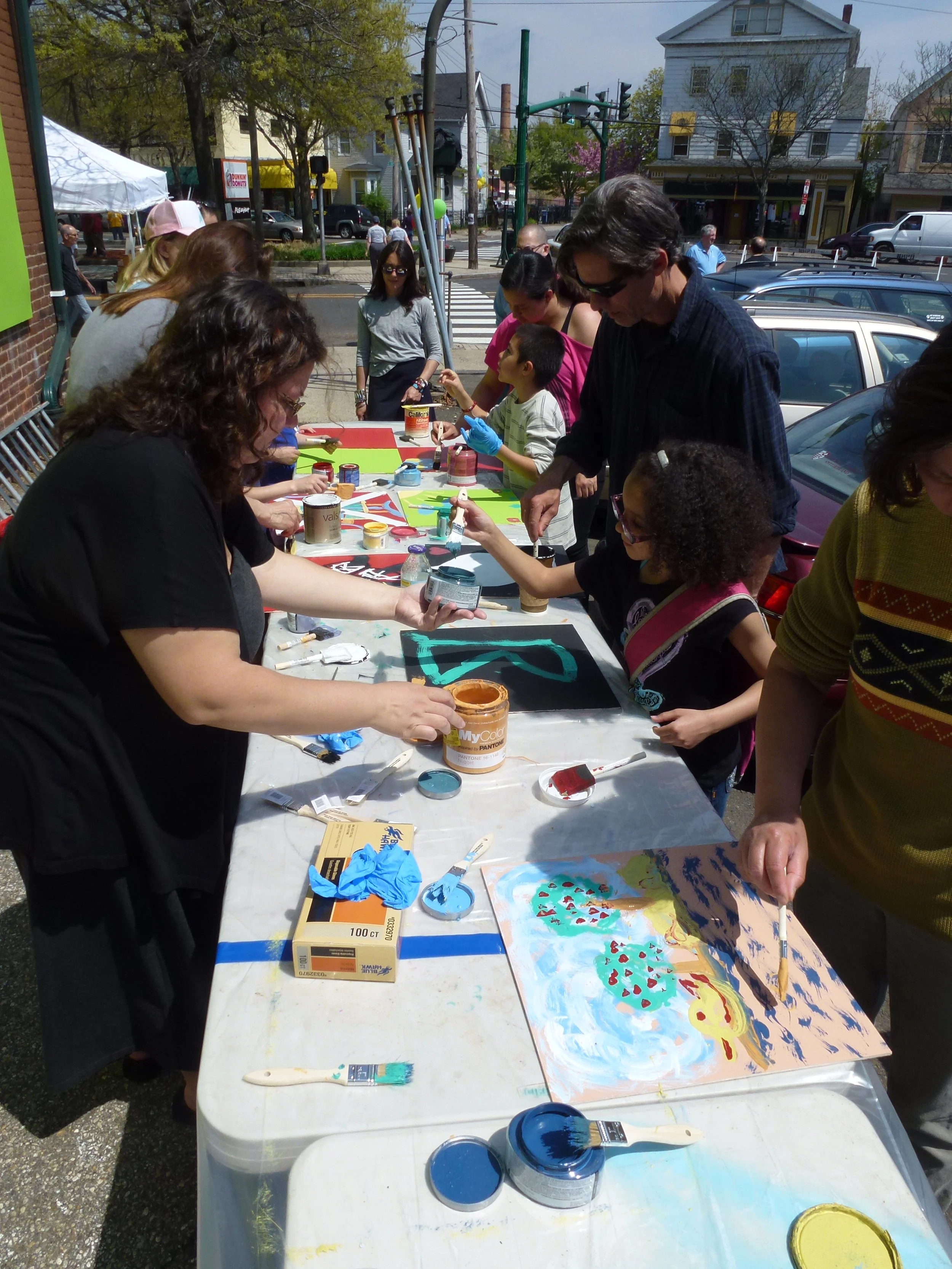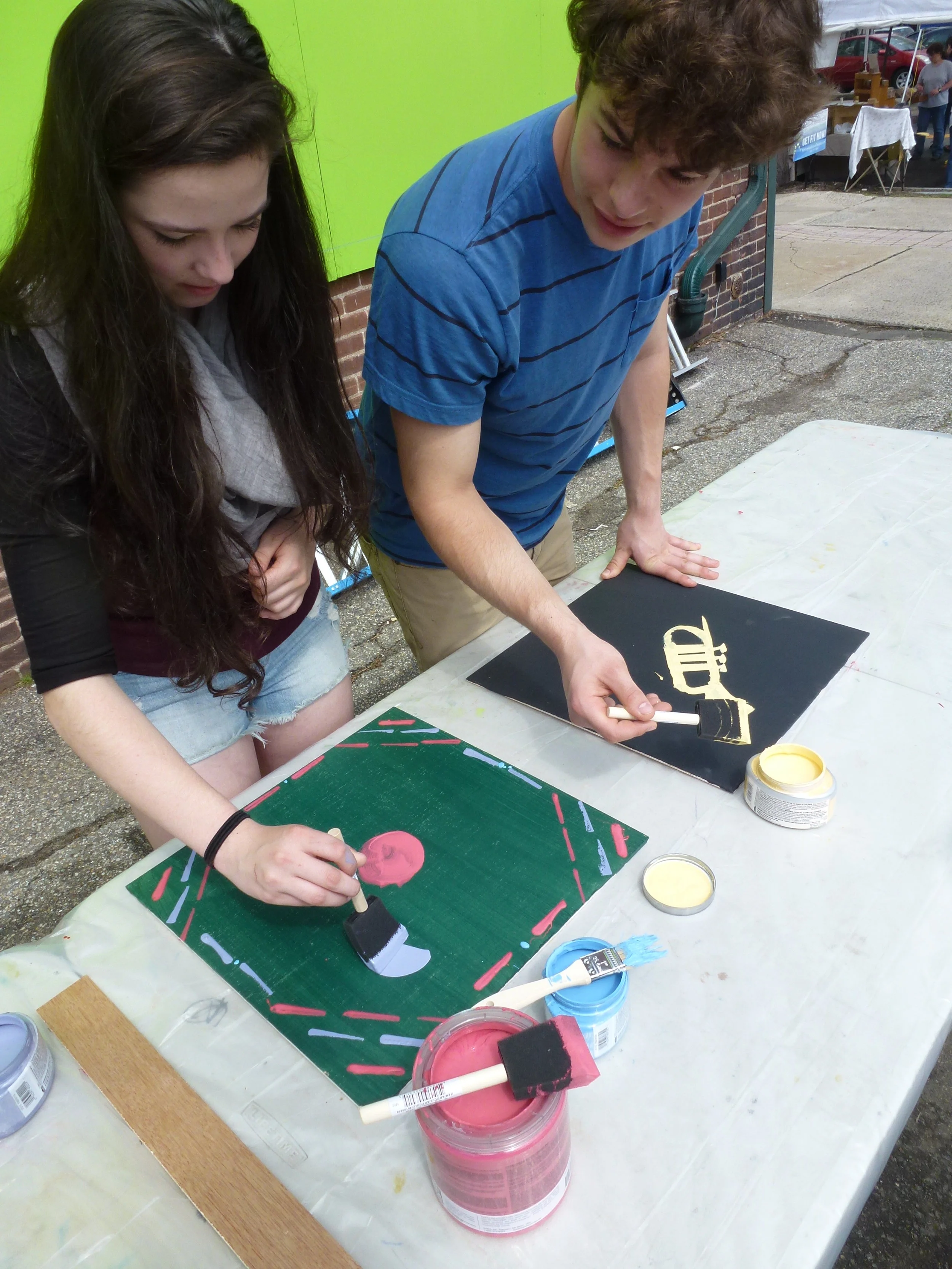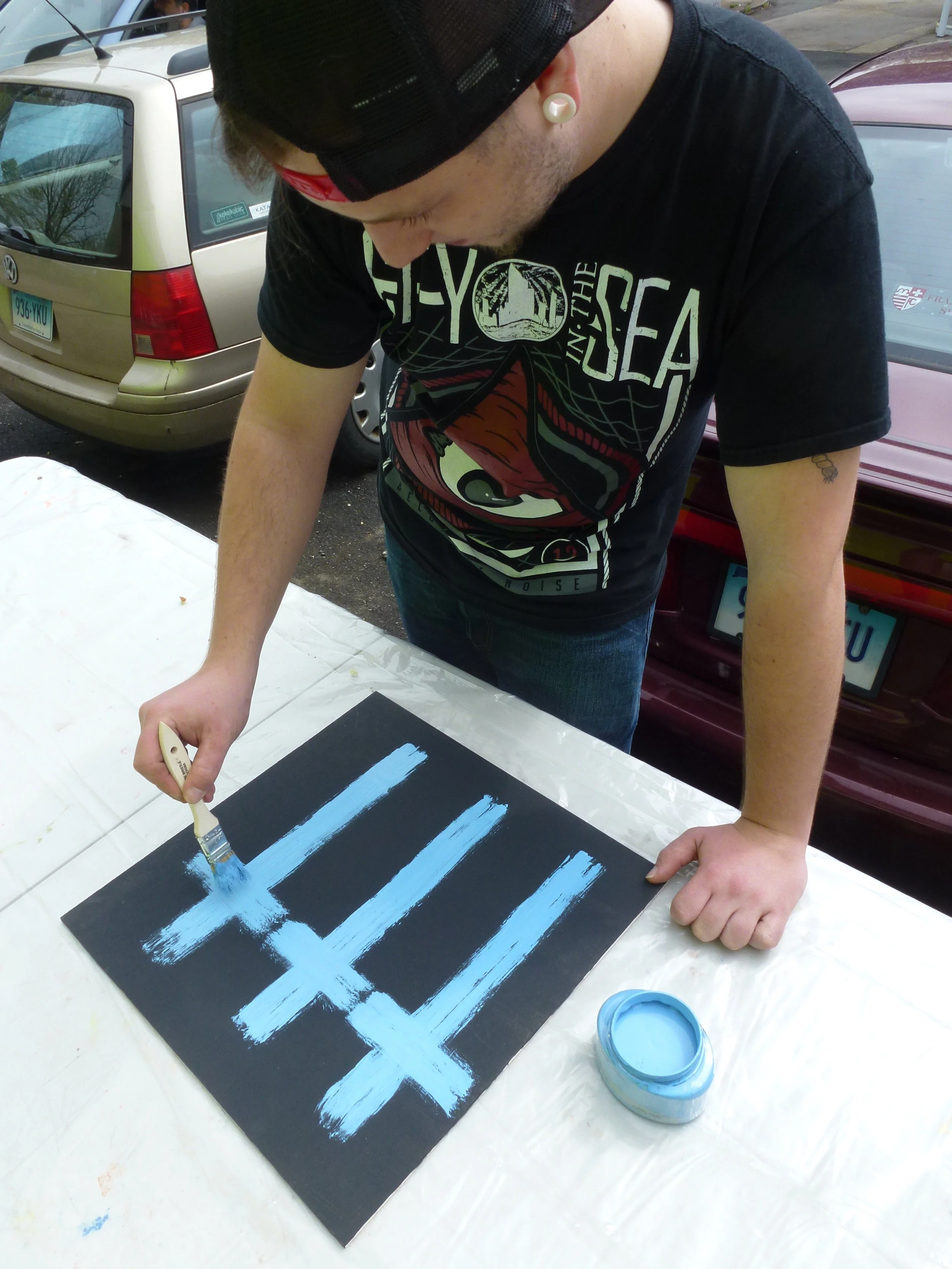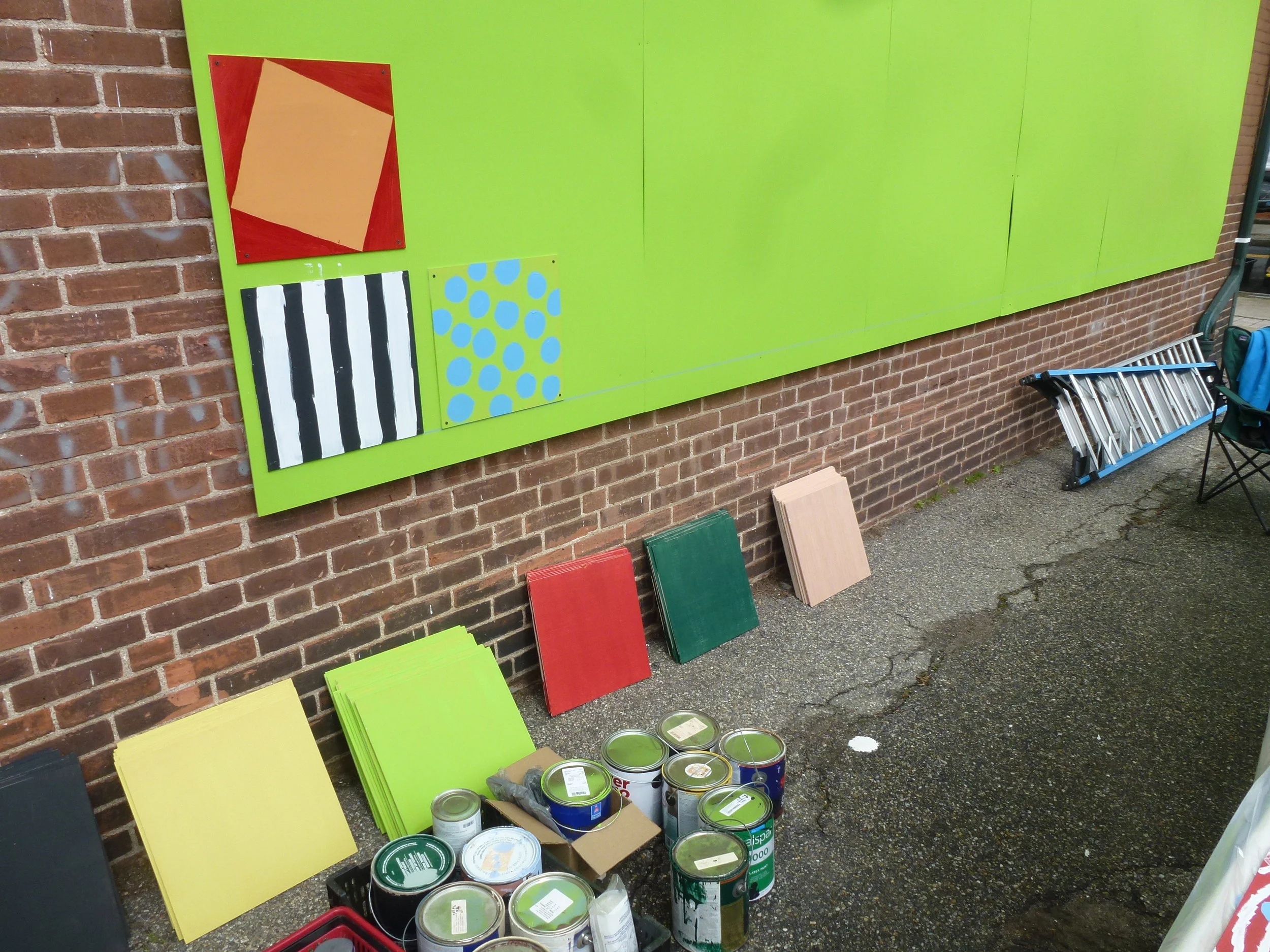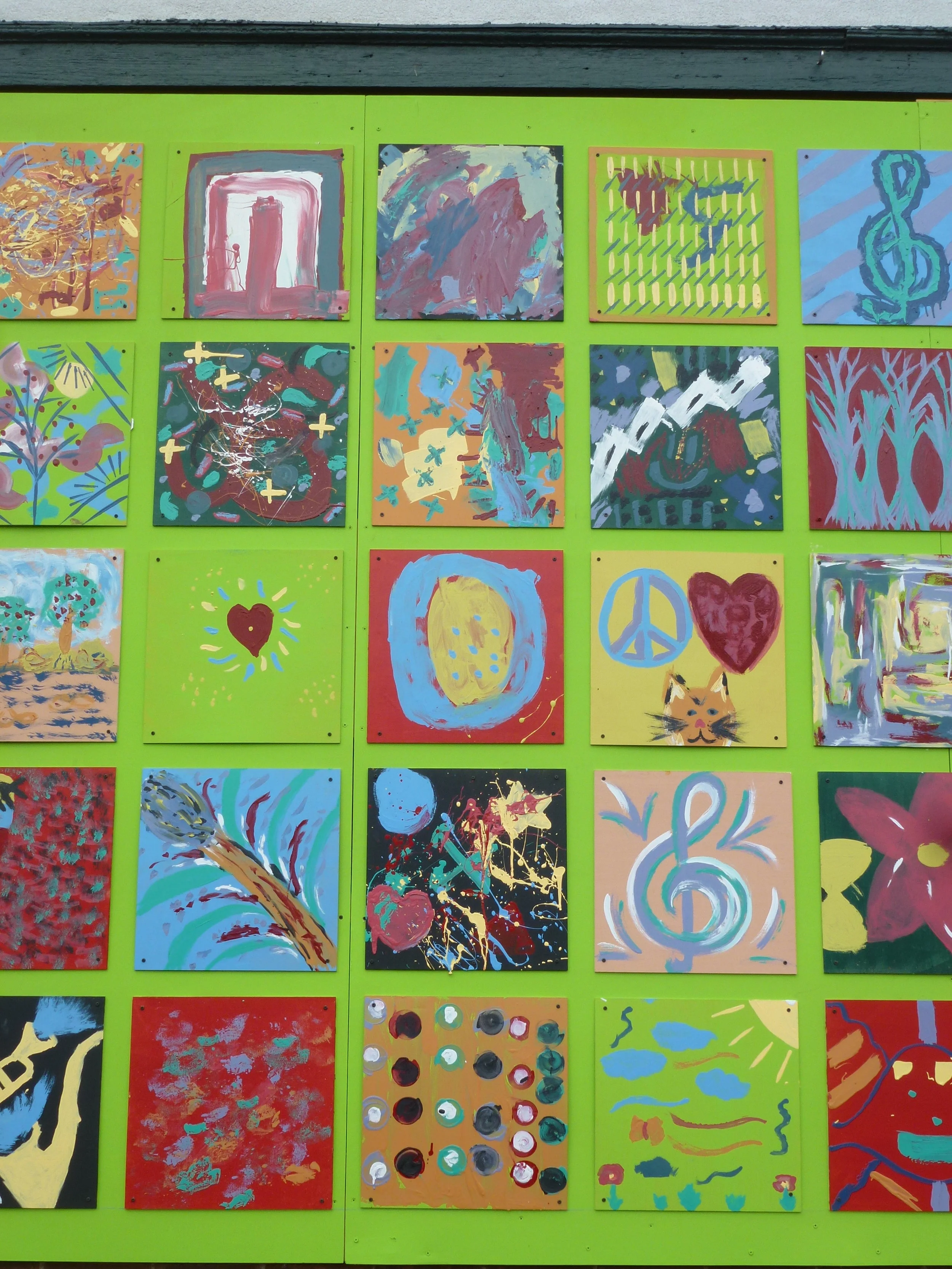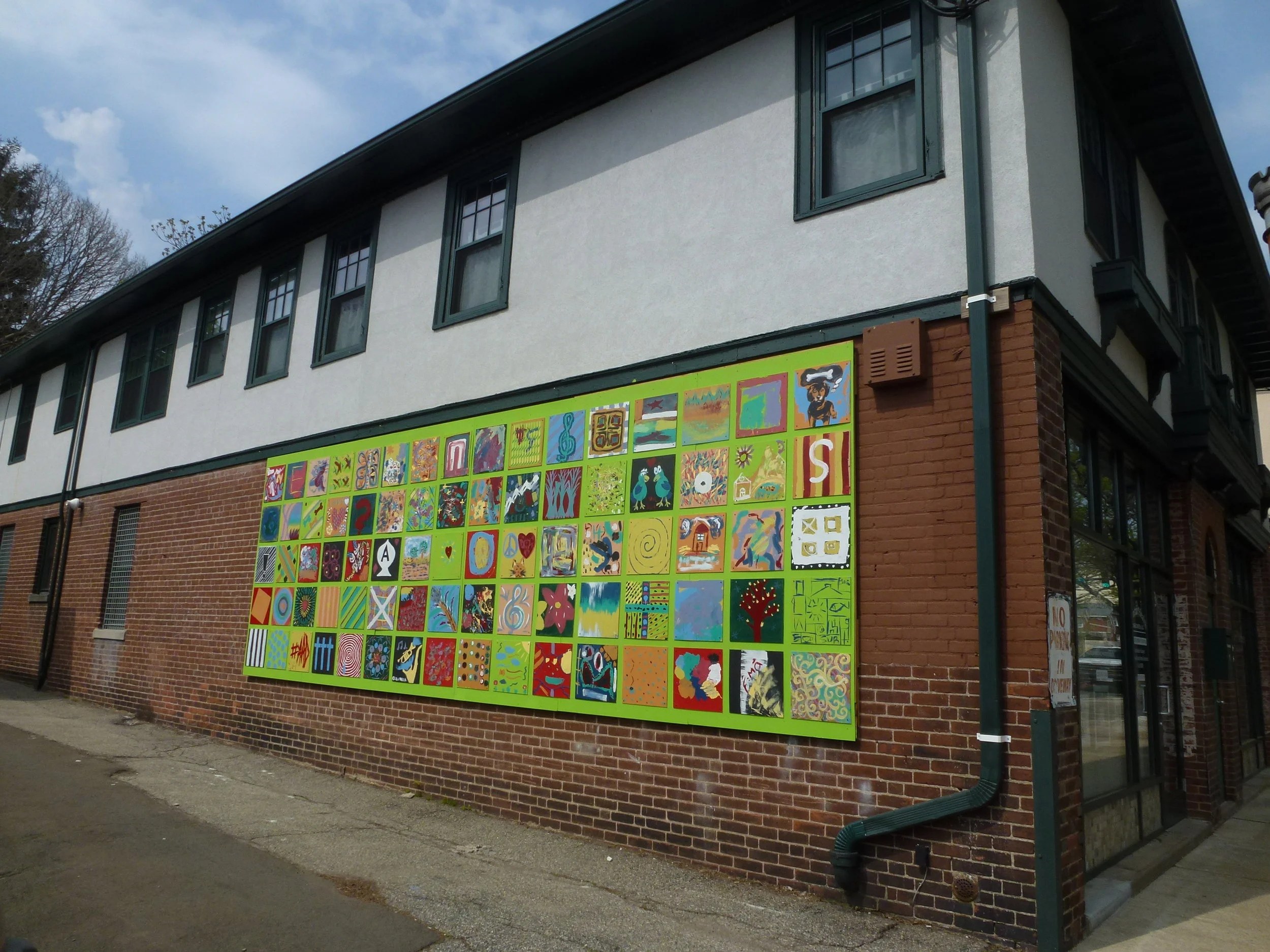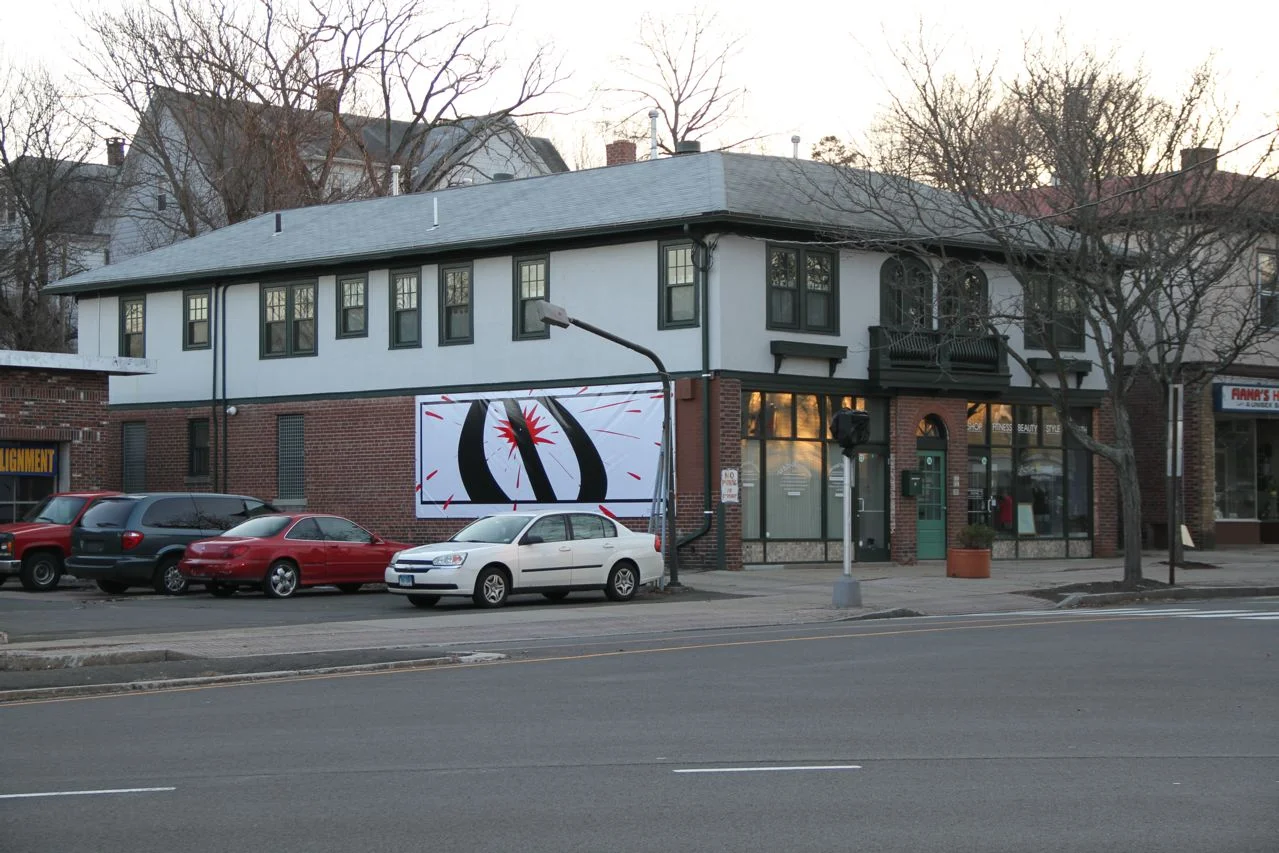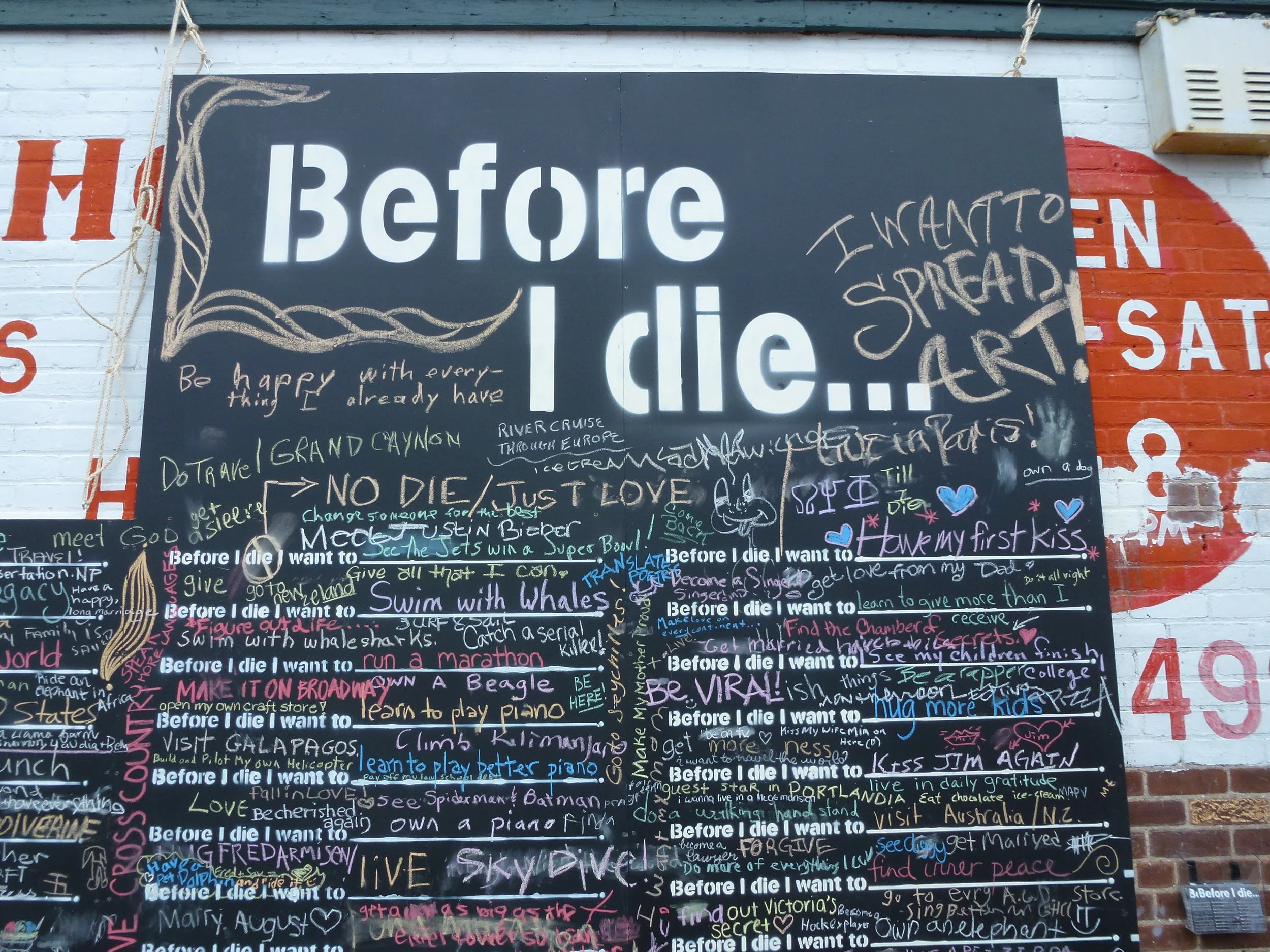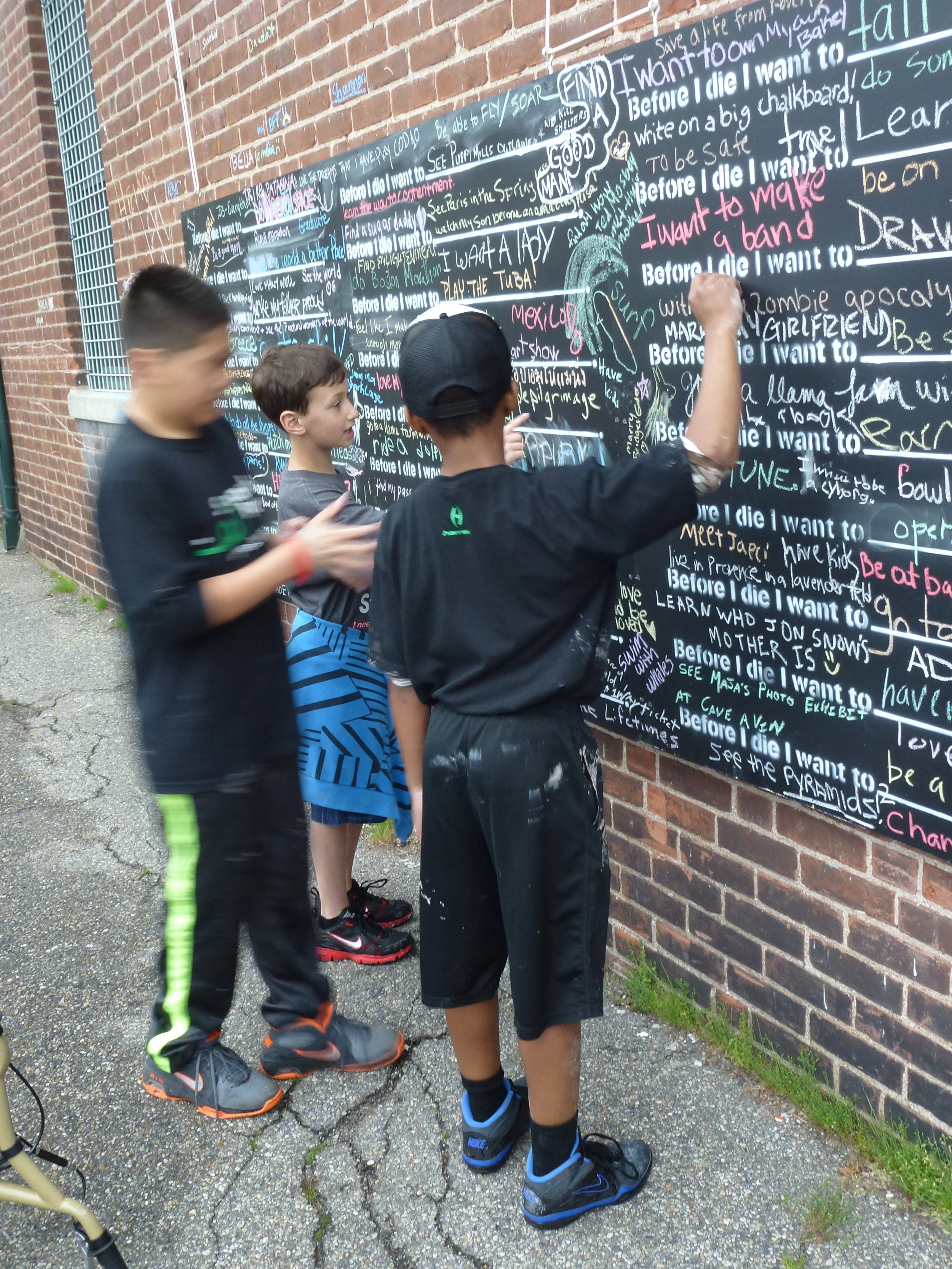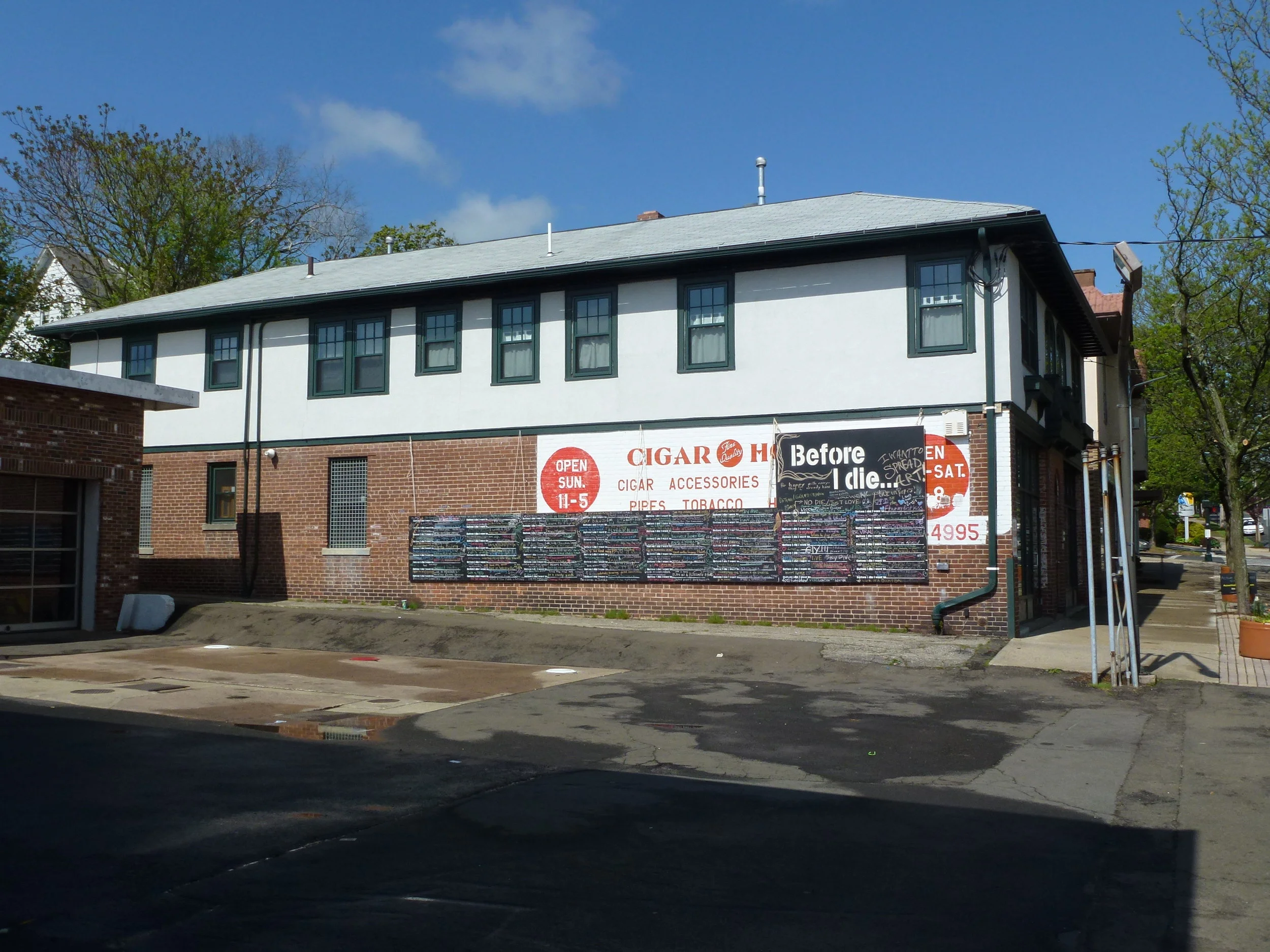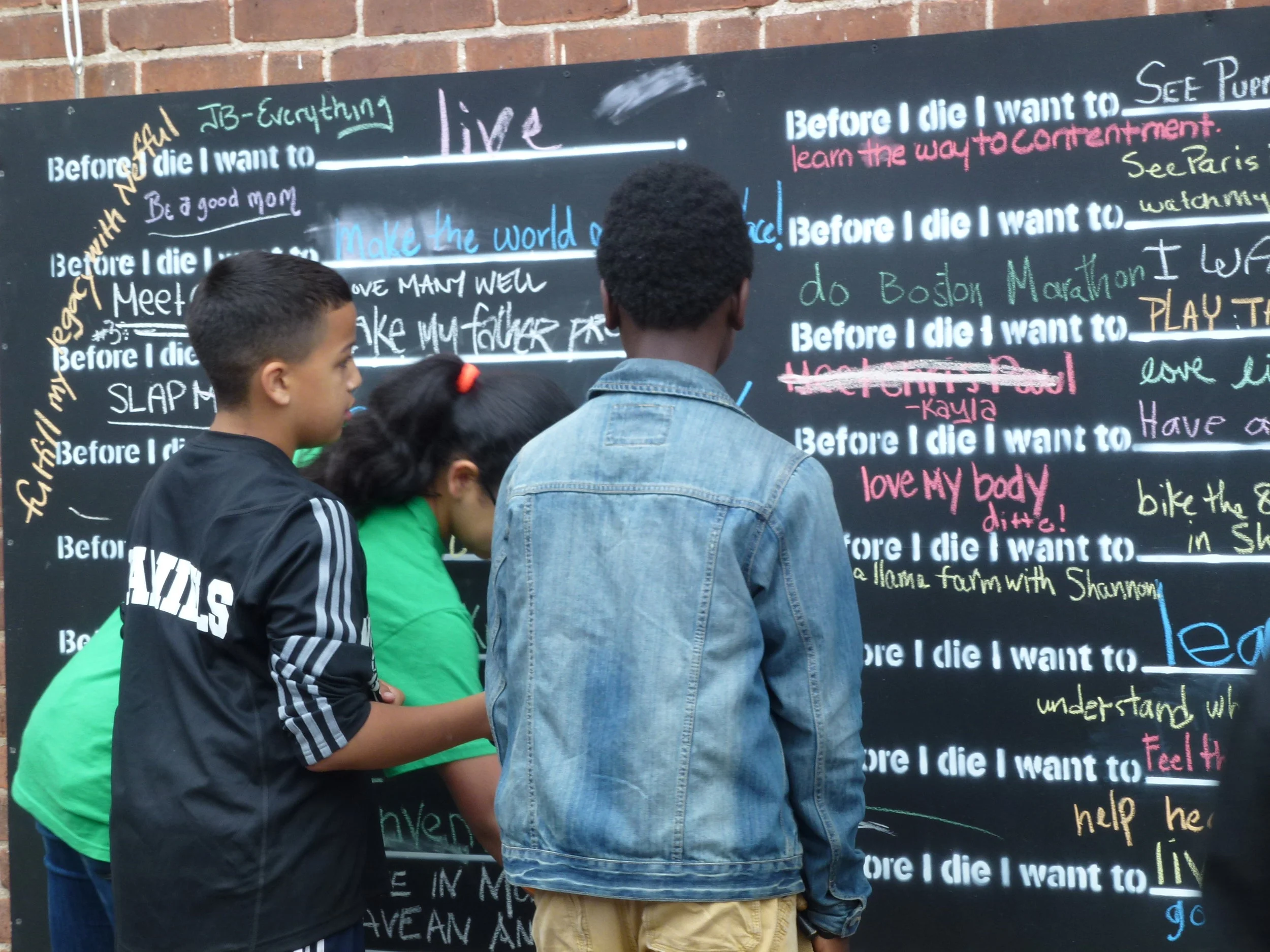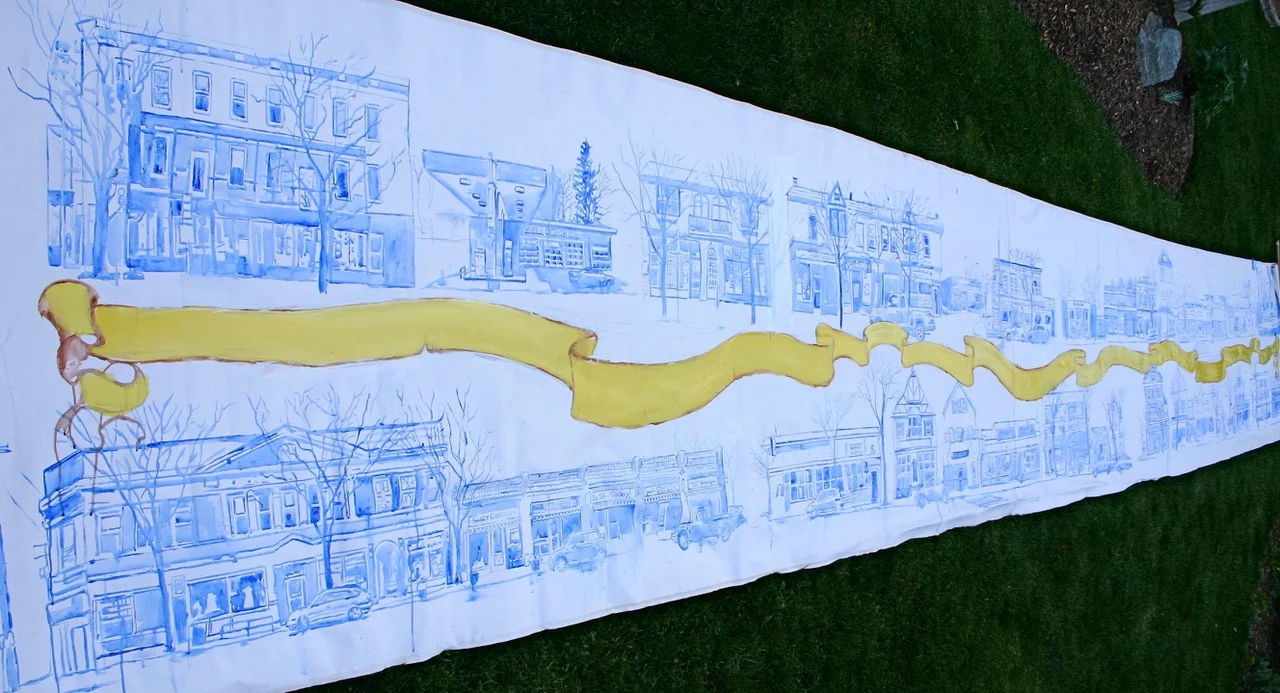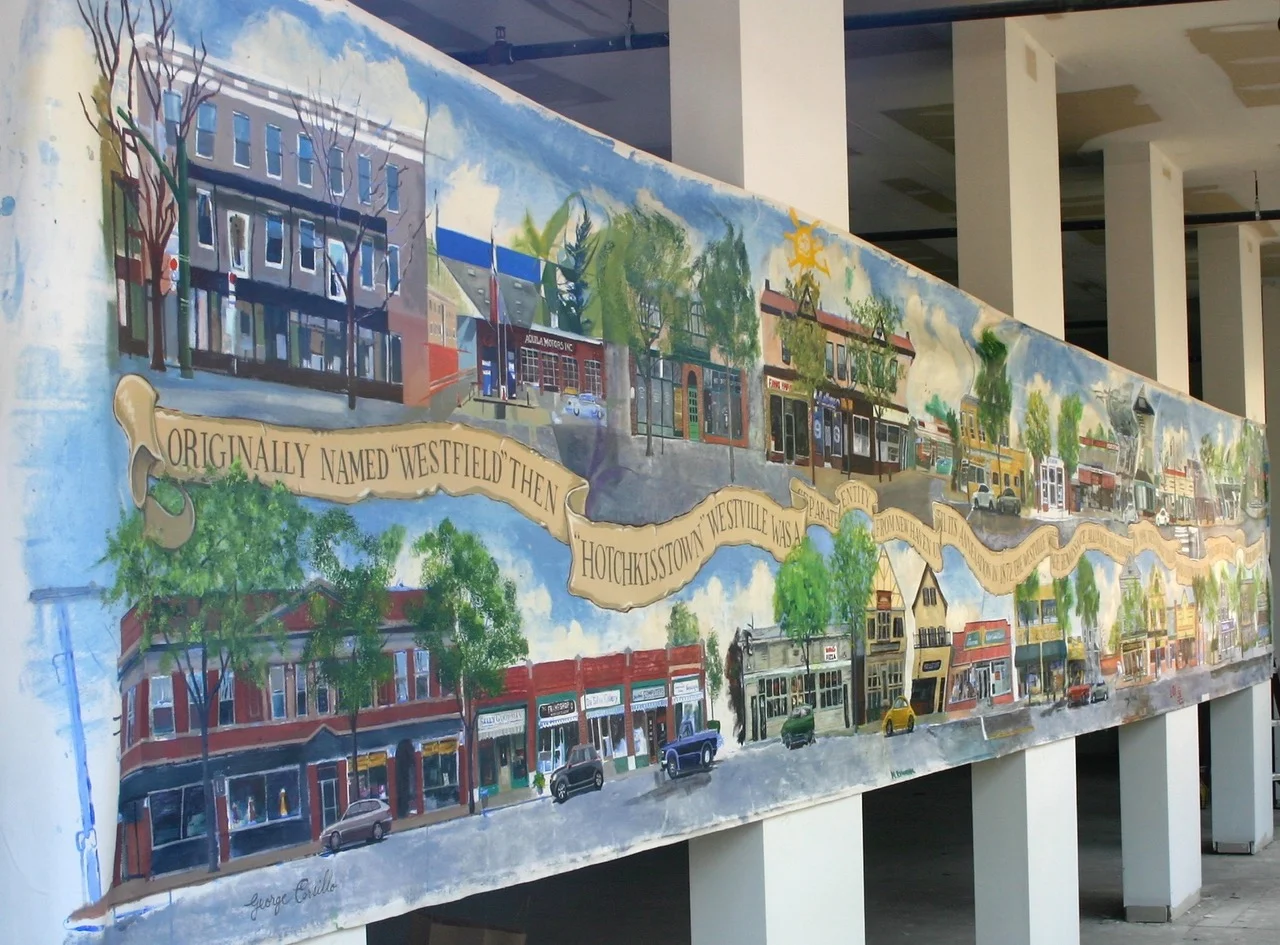Artist: Eric Epstein
Website: EpsteinDesign.net
Assistant: Alyson Fox
Installed: October 2019
Materials: Painted plywood, coroplast
Statement
In 1826, German educator Friedrich Froebel wrote:
‘Play to man, especially in childhood, is a mirror both of thoughts and feelings, and of surroundings. In childhood it is emphatically a mirror of the innate need for life and occupation. So a plaything is anything which is related to the child as a means to purpose, and which, by creating pleasant anticipation, calls forth play in which he finds fresh and continuous pleasure. Play is, therefore, really the product of the connection of related opposites – the free activity of the child and the mobility and consequent responsiveness of the object’
Froebel was the first to establish a program of preschool education encouraging children to learn through “free work”--self-directed play with specialized balls, blocks, sticks, papers, pencils, and modelling clay. He believed his series of activity kits—“Gifts” and “Occupations”— would help children develop creative faculties and problem solving abilities while learning about forms and relationships found in nature.
Later that century, the young American kindergarten teacher/entrepreneur Milton Bradley further developed Froebel’s Kindergarten Gifts and began producing them in the US. As kindergartens here became popular, Bradley's Gifts became standard kindergarten materials. Frank Lloyd Wright recalled playing with them as a child, crediting them with influencing his career path and design sensibility. He wasn’t alone: other major 20th Century creative leaders including Le Corbusier, Piet Mondrian, Paul Klee, Buckminster Fuller, and Josef & Anni Albers also acknowledged the Gifts’ influence.
In particular, Bauhaus-trained artist Anni Albers created graphics and weavings reminiscent of the Gifts’ clarity and variable geometric order. Her exploration of abstractions resulting from a gridded but random arrangement of one simple geometric shape reminiscent of Froebel Kindergarten Occupation Material - Gift #7 - Parquetry is the departure point for Installation #16: Try Angular.
Albers’s work was fixed in two dimensions. Sun exposure on EastWallWestVille offered an opportunity to animate and extend a simple Froebel-inspired Albers geometry to a third dimension by lifting a corner of each of the triangular elements. At the sun’s most direct angle to the wall, the black triangles retain their geometric purity and the piece appears 2-D; but as the sun transits the sky the lifted corners of the triangles create shadows, increasingly warping and abstracting the geometry as the sun angle becomes more acute.
As luck would have it, two rogue windstorms during the month-long installation resulted in additional “free activity of the child and the mobility and consequent responsiveness of the object,” affording me “fresh and continuous pleasure” to meet new neighbors (Hey…is this your triangle?) and explore alternate arrangements of the elements.











